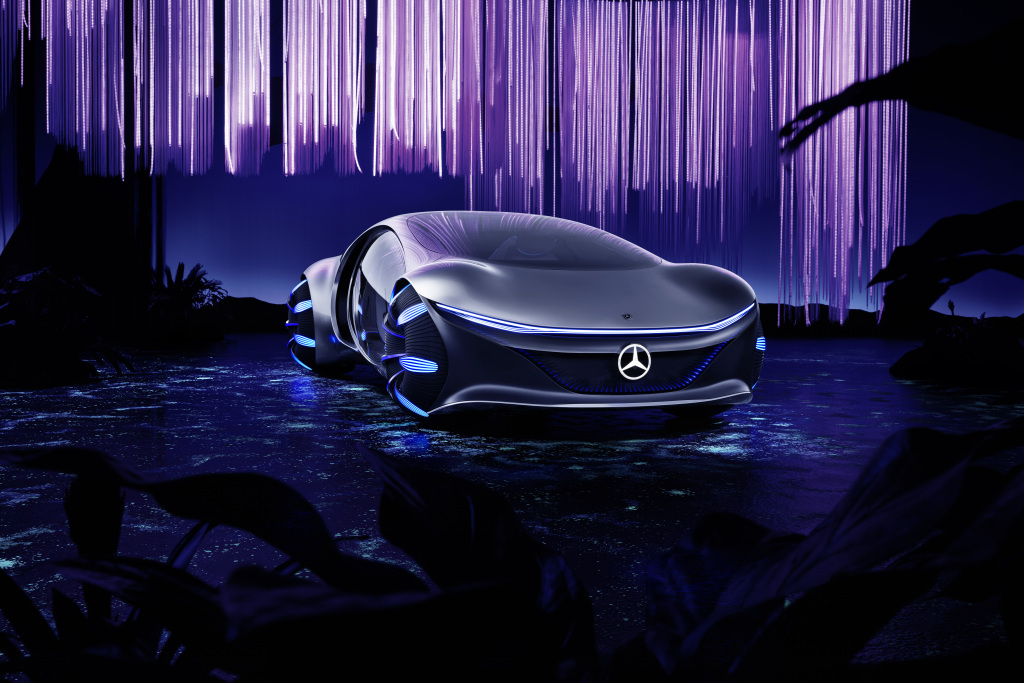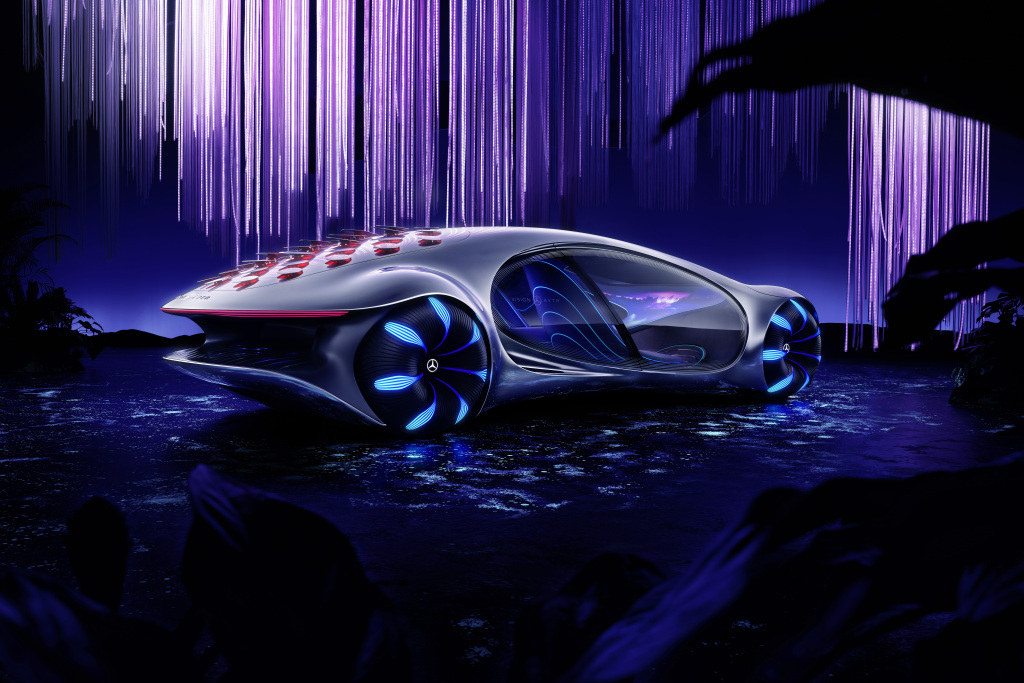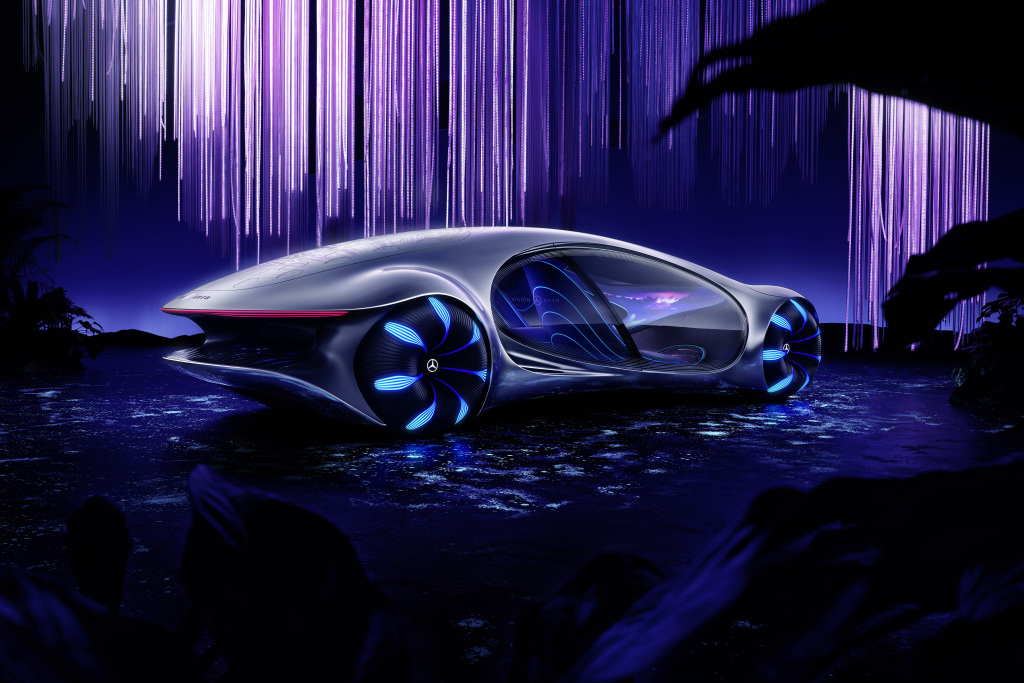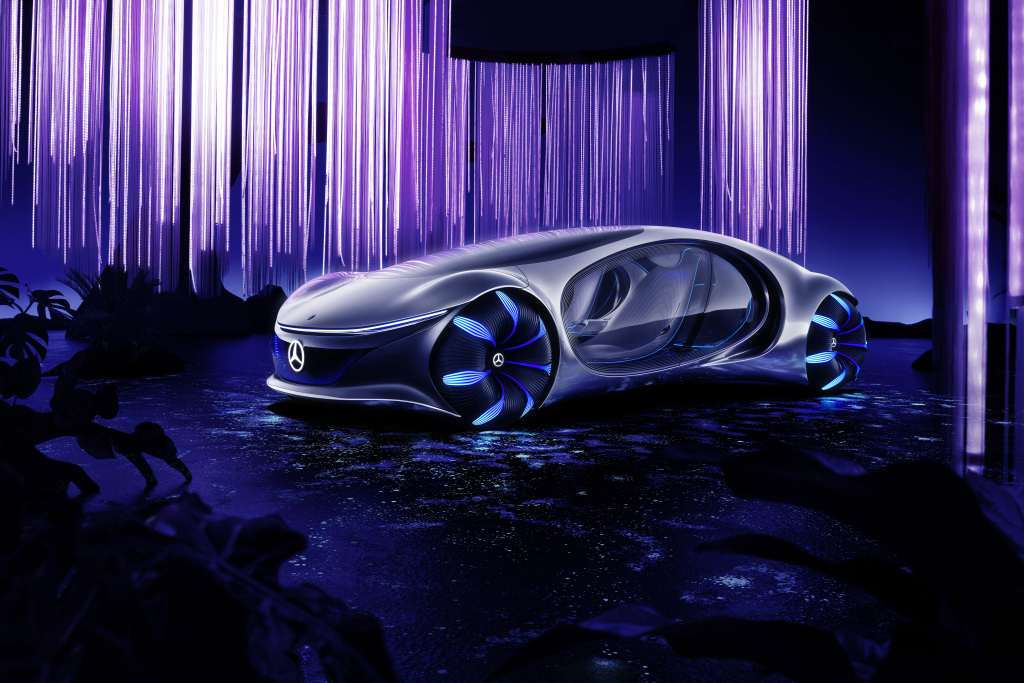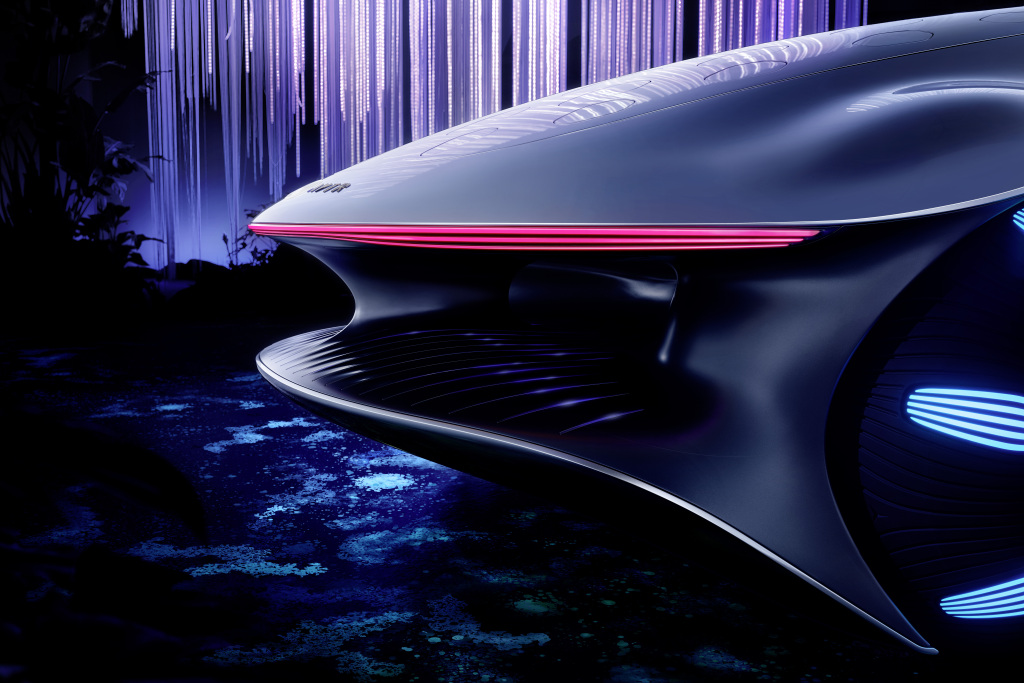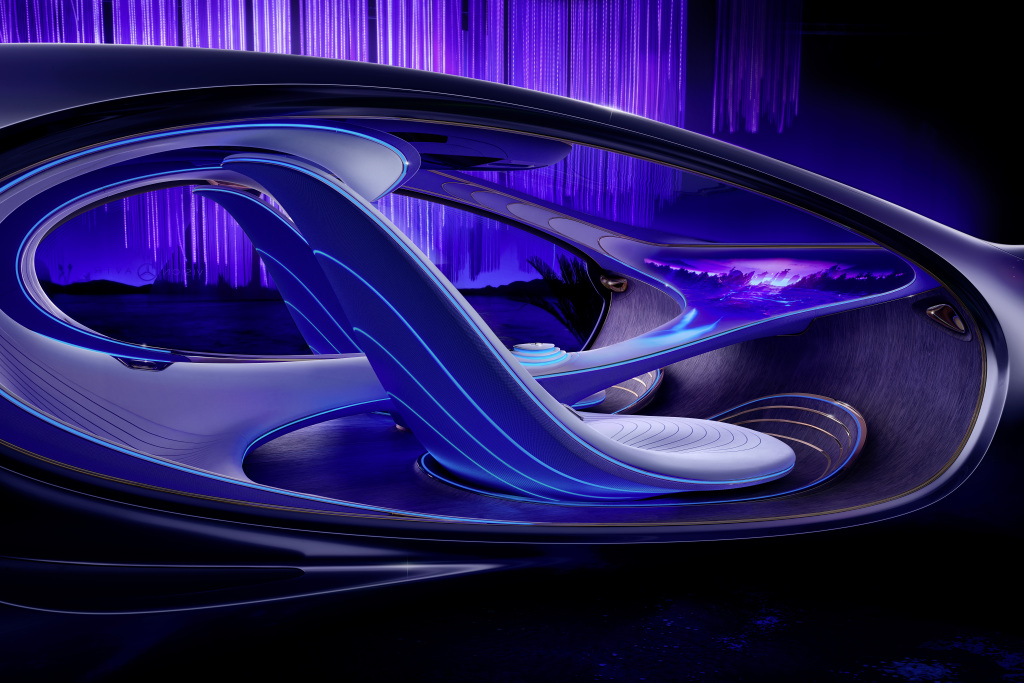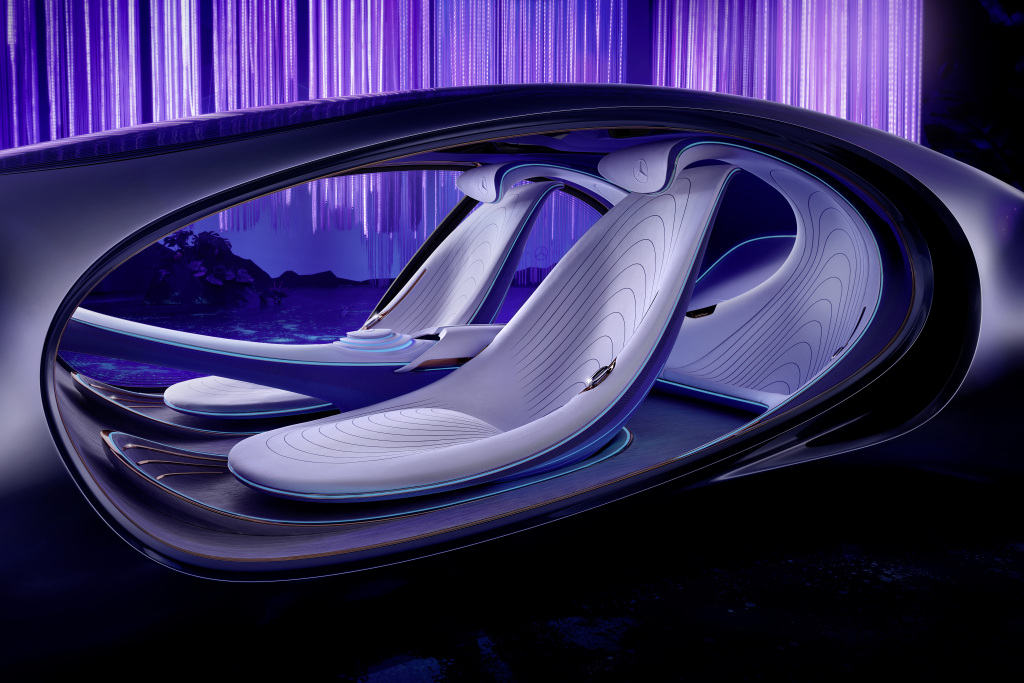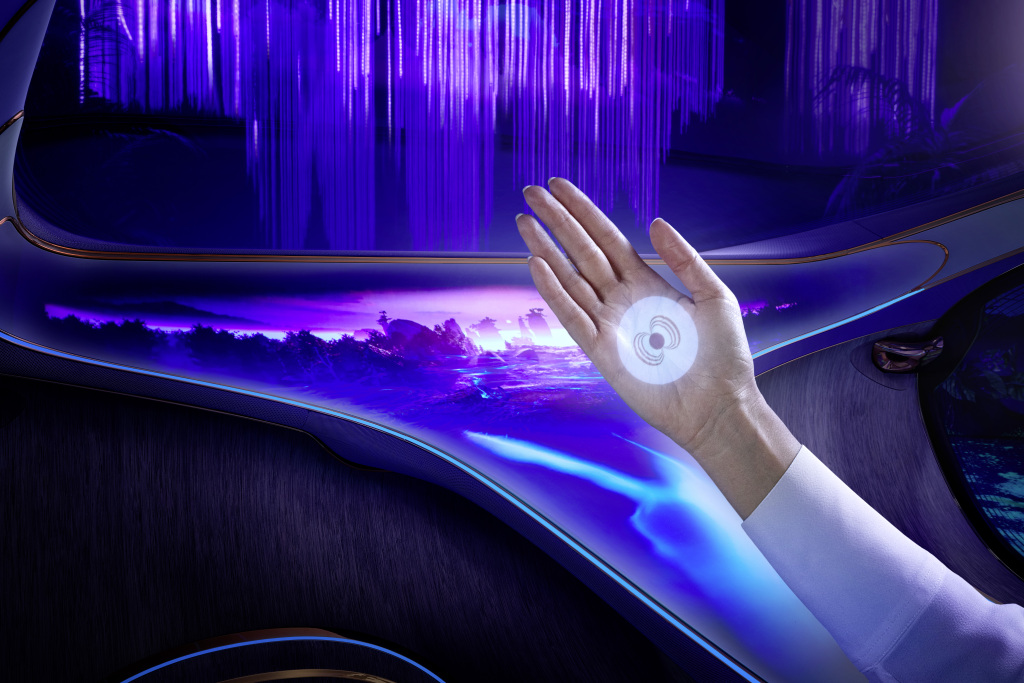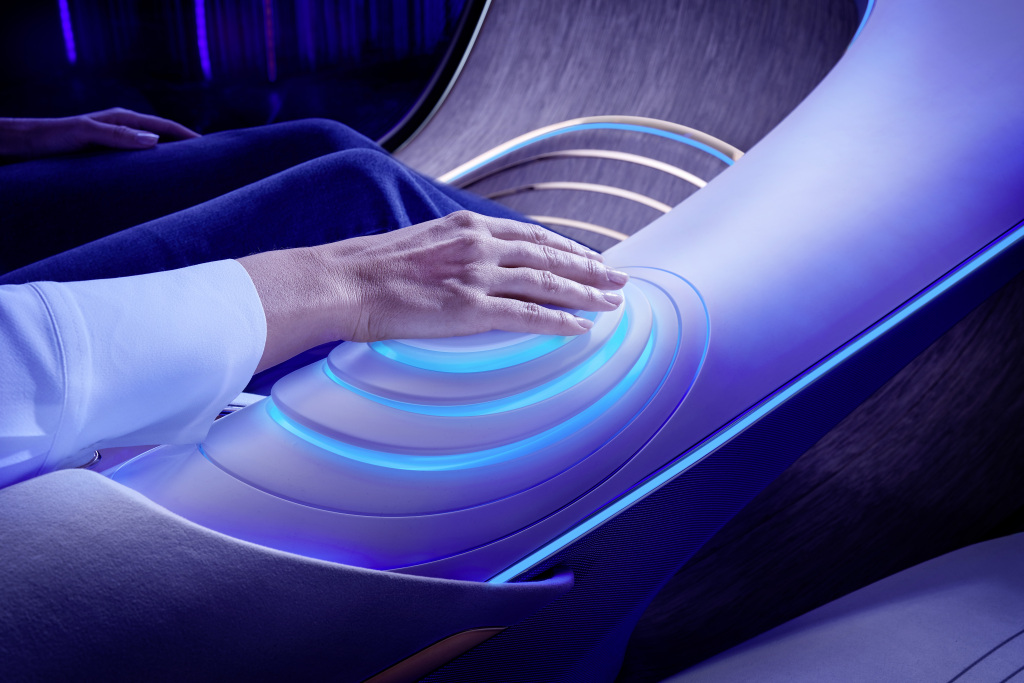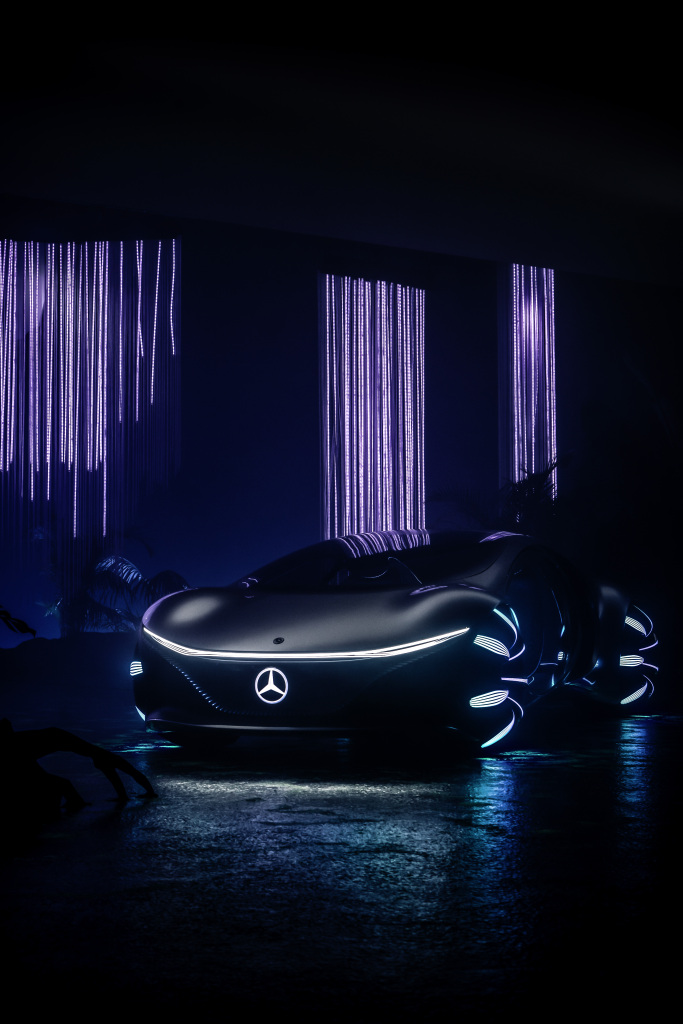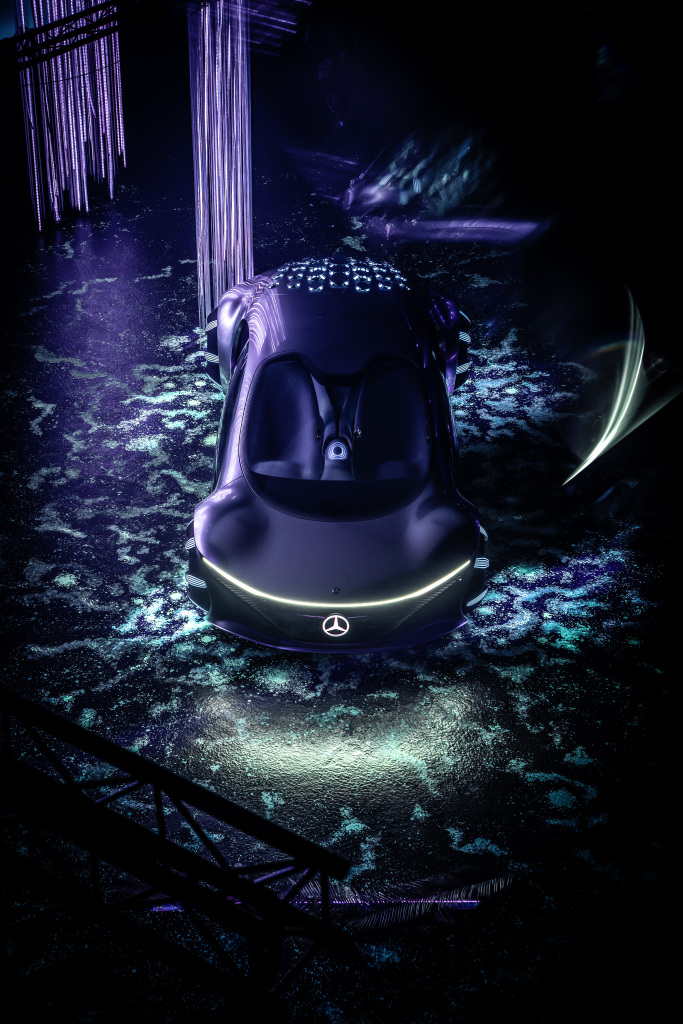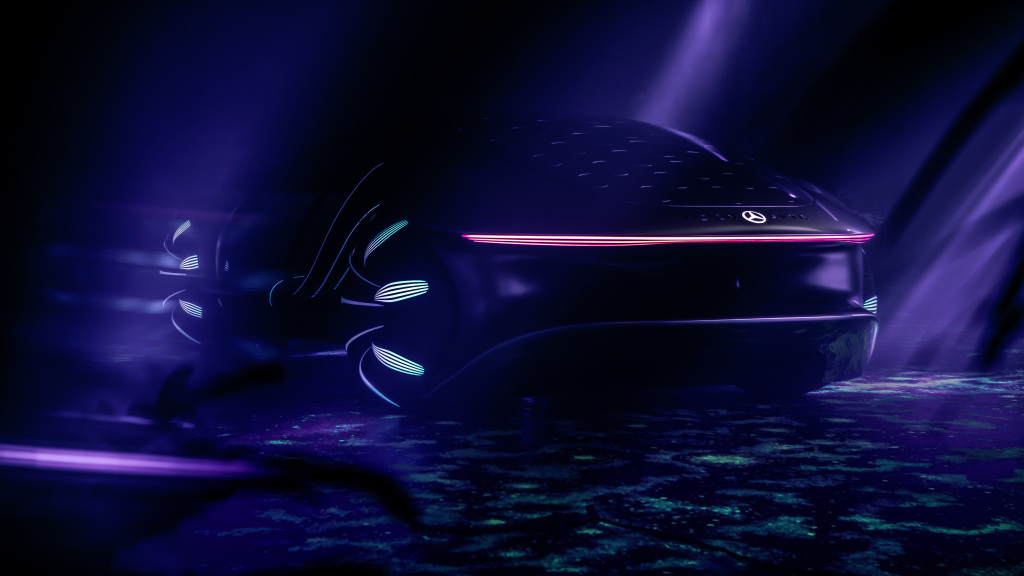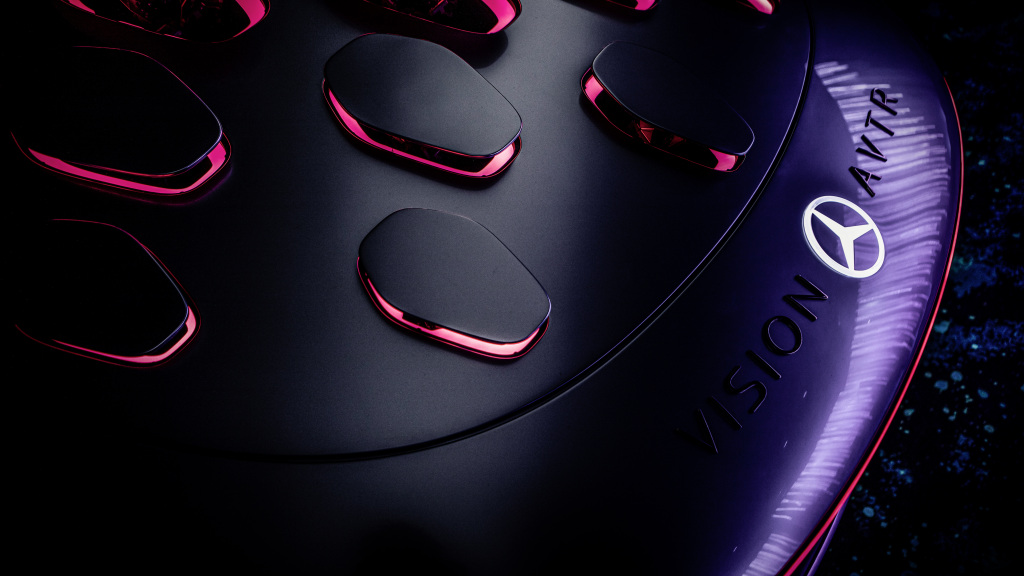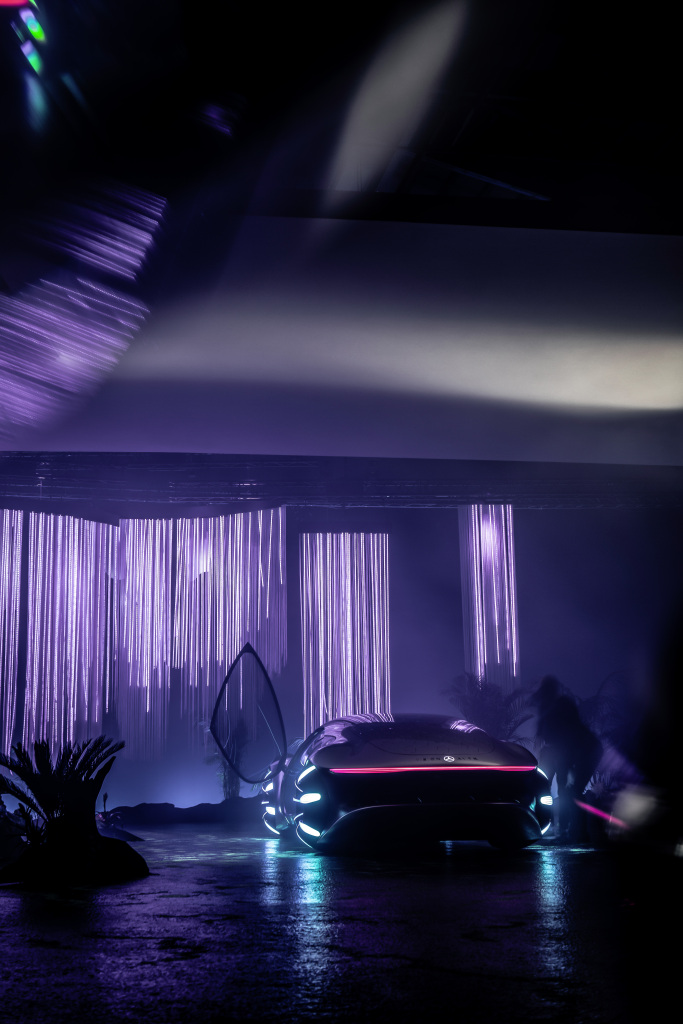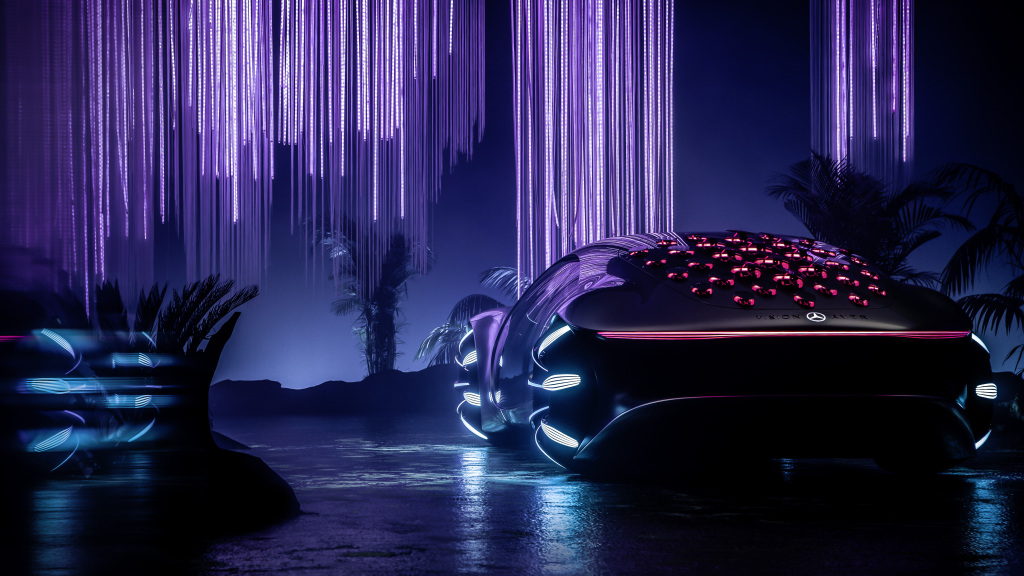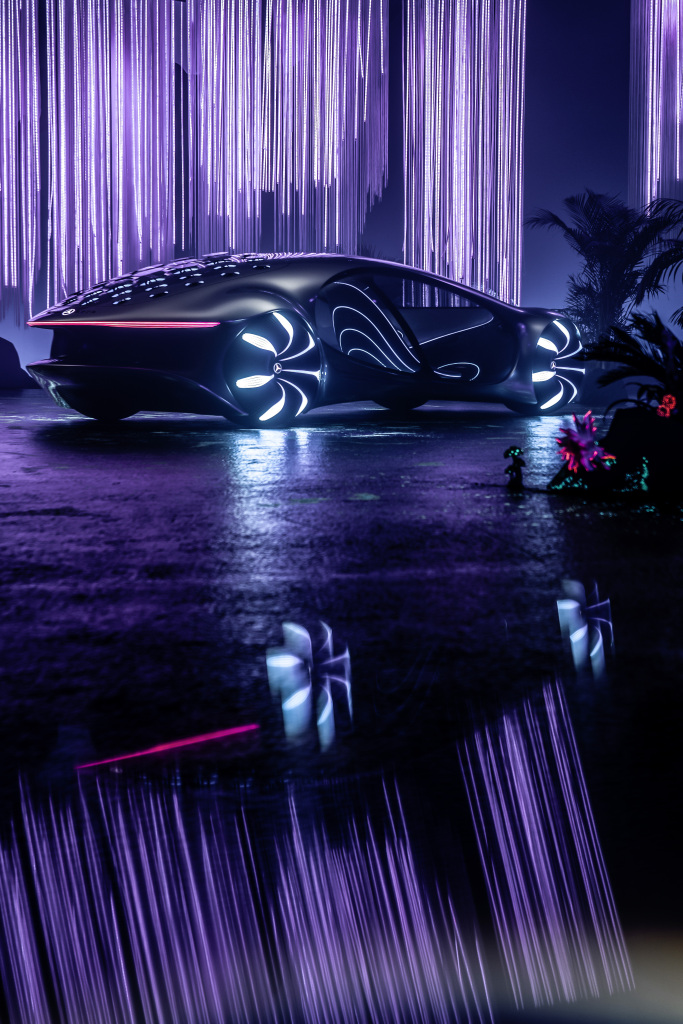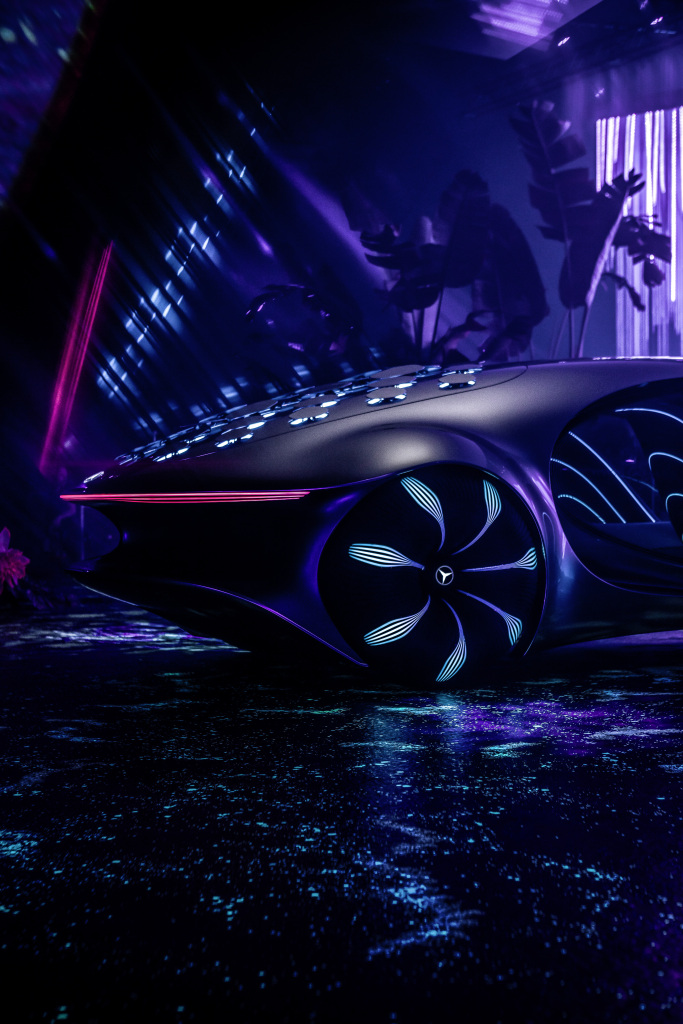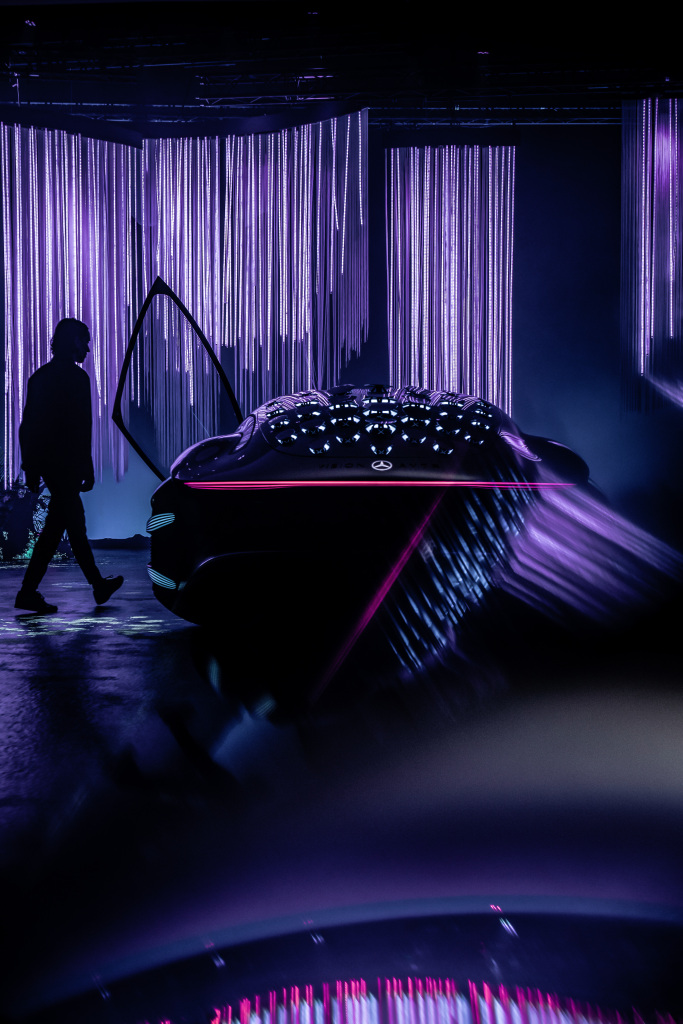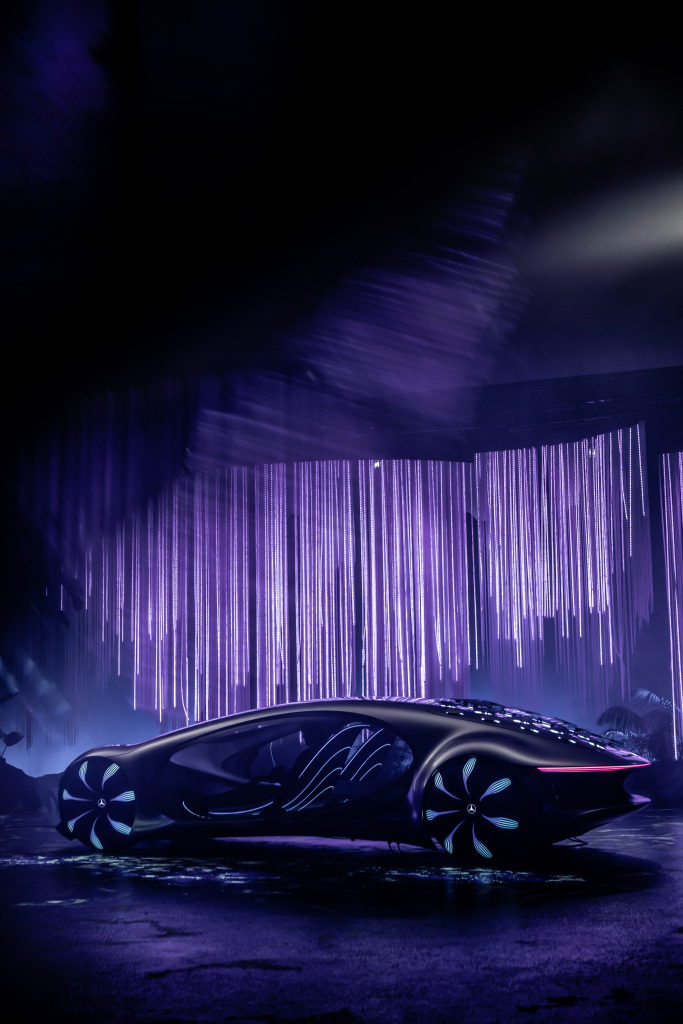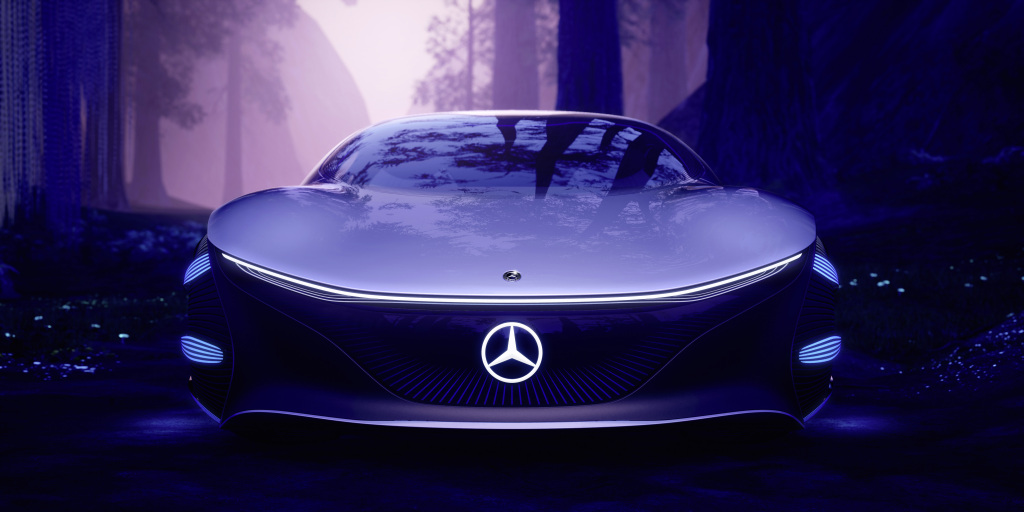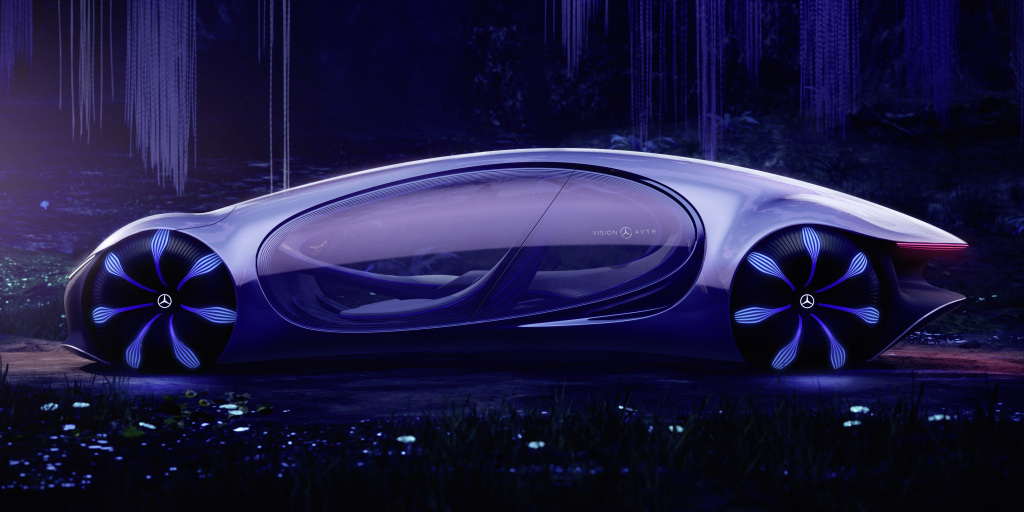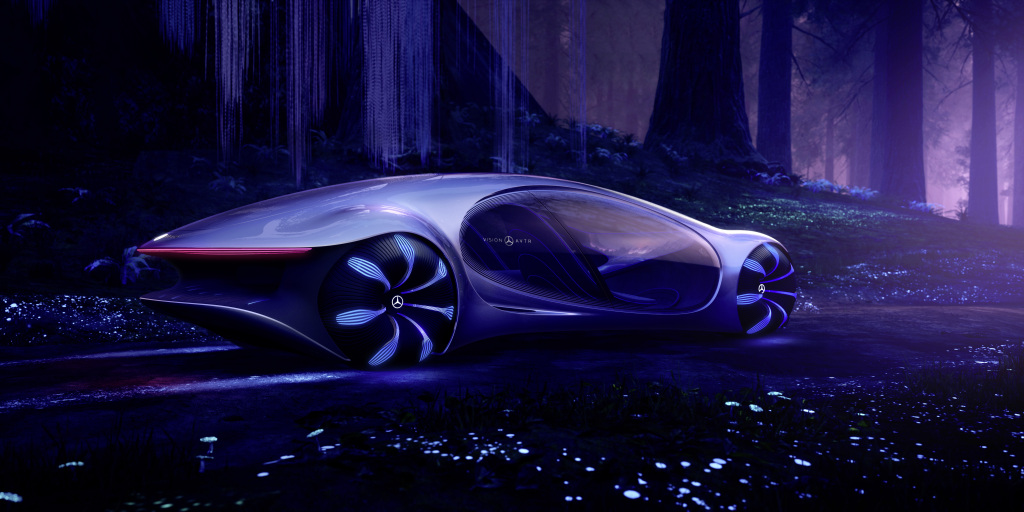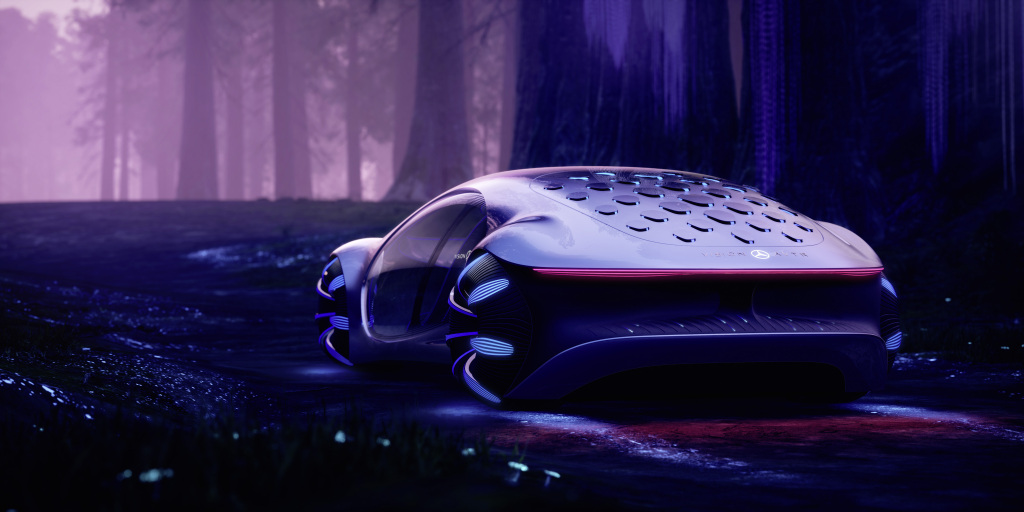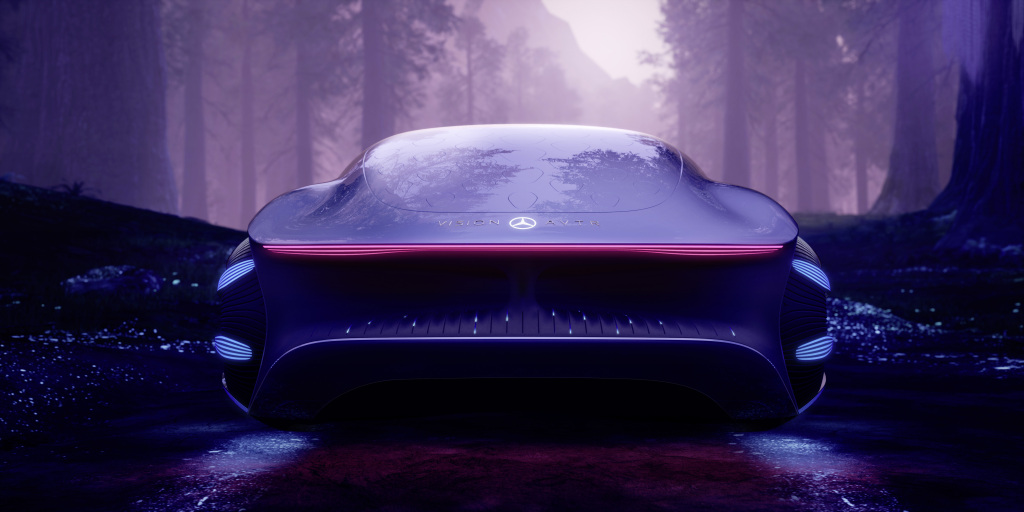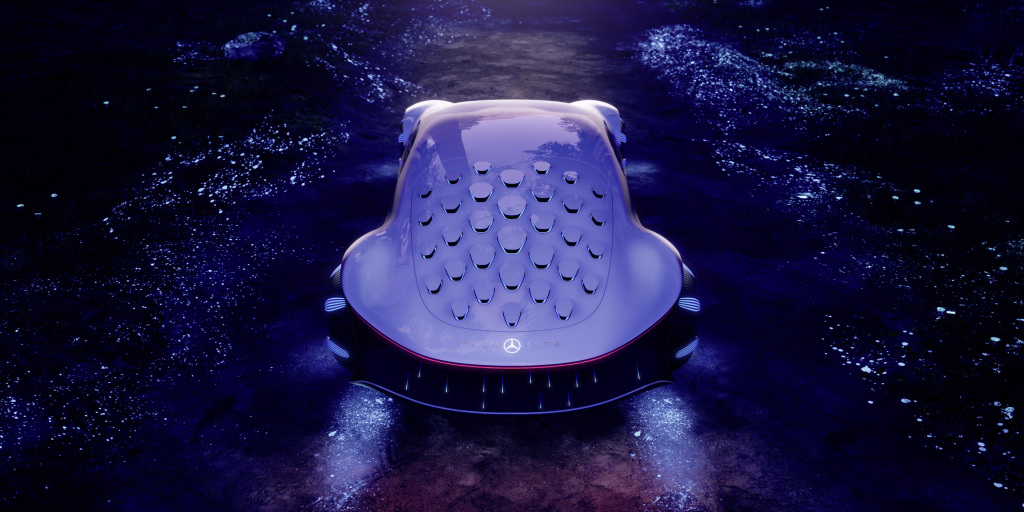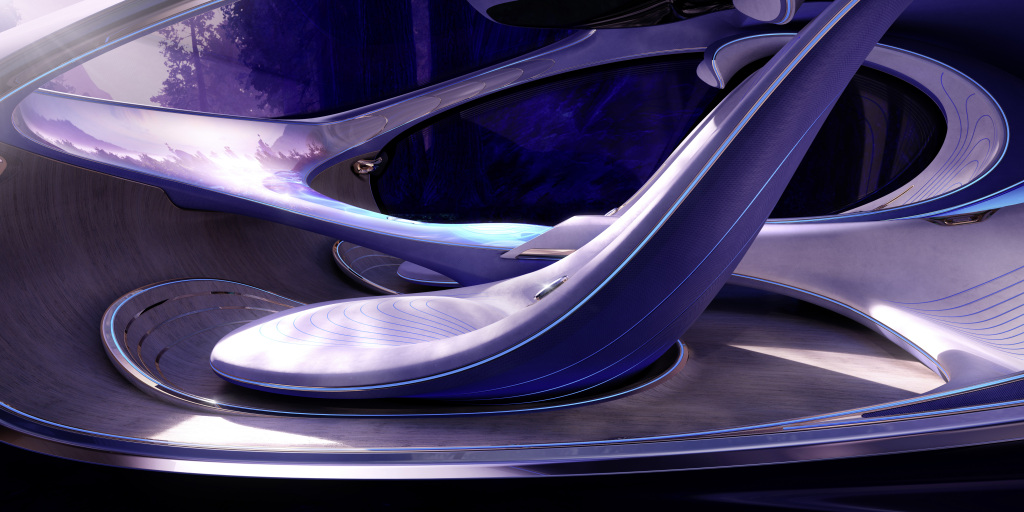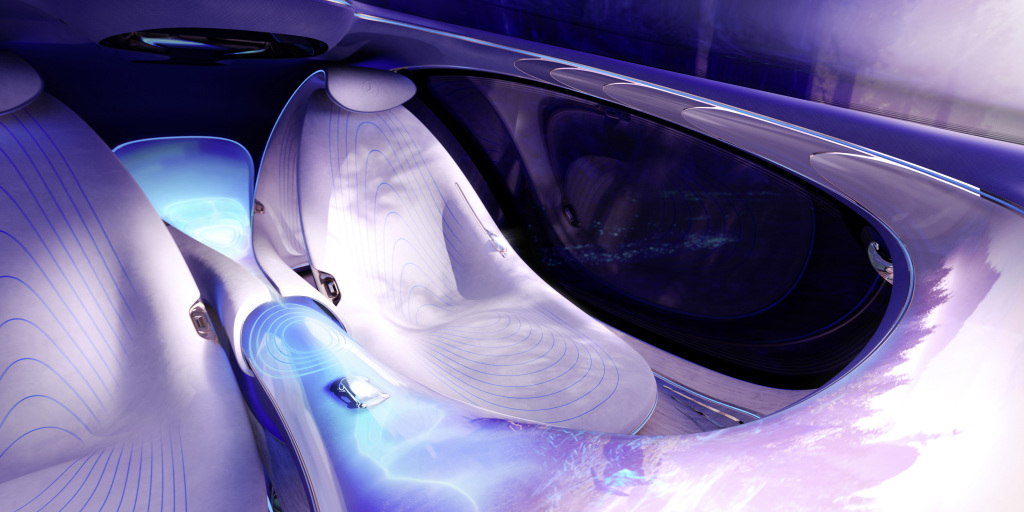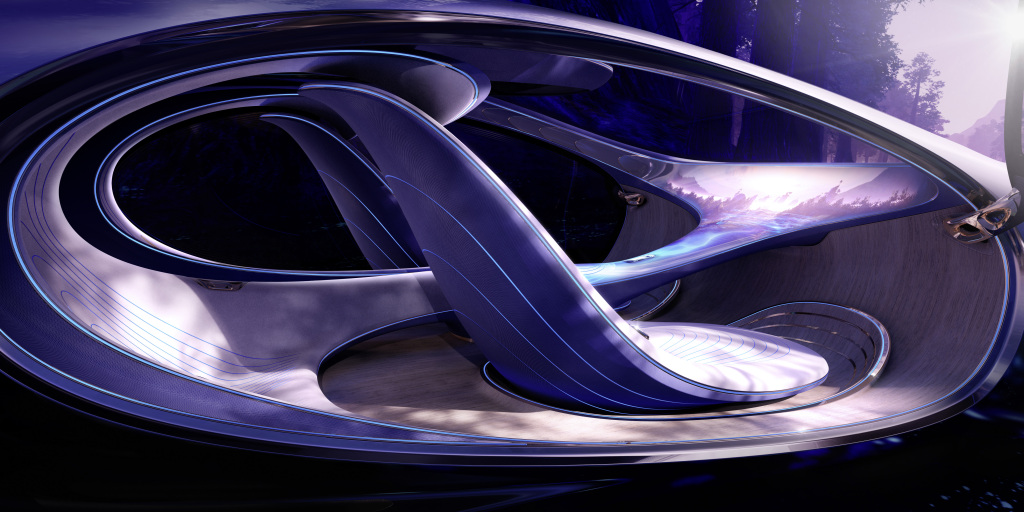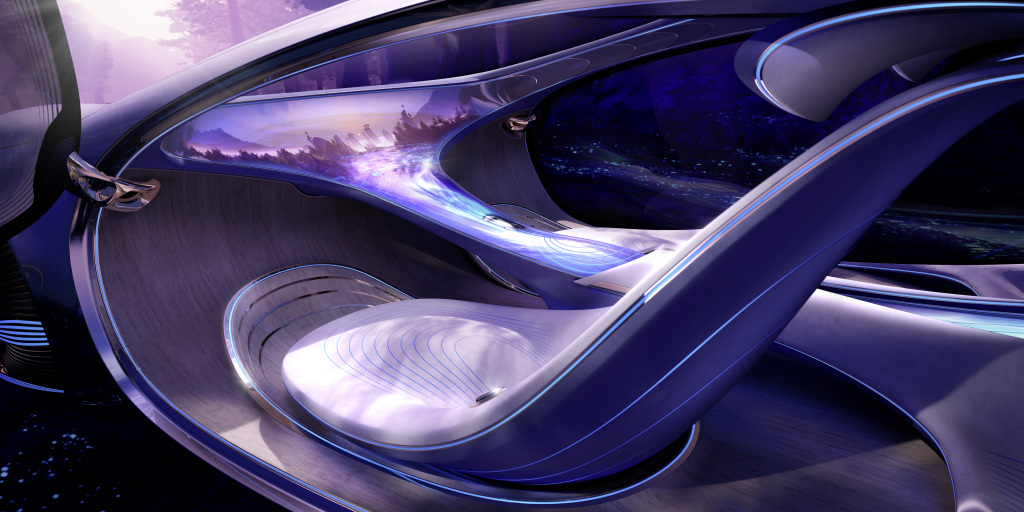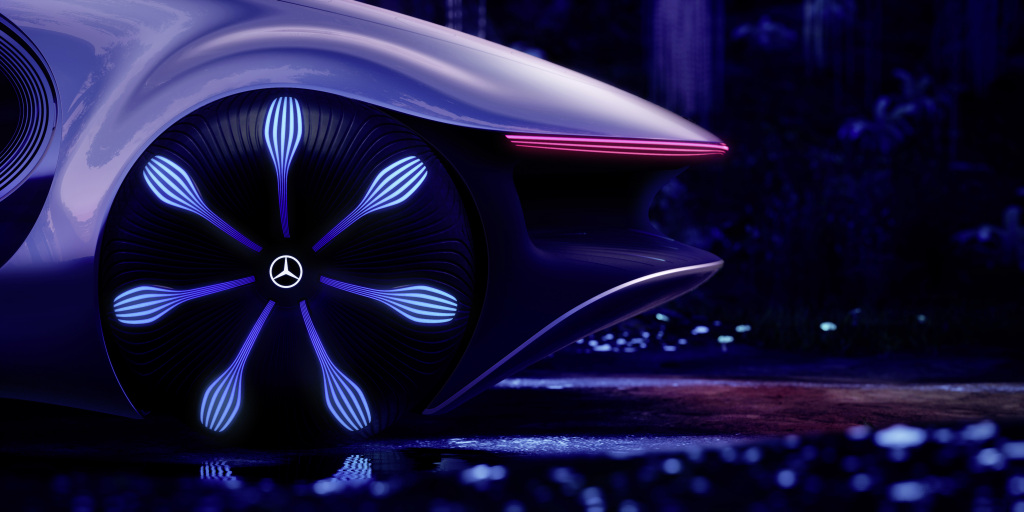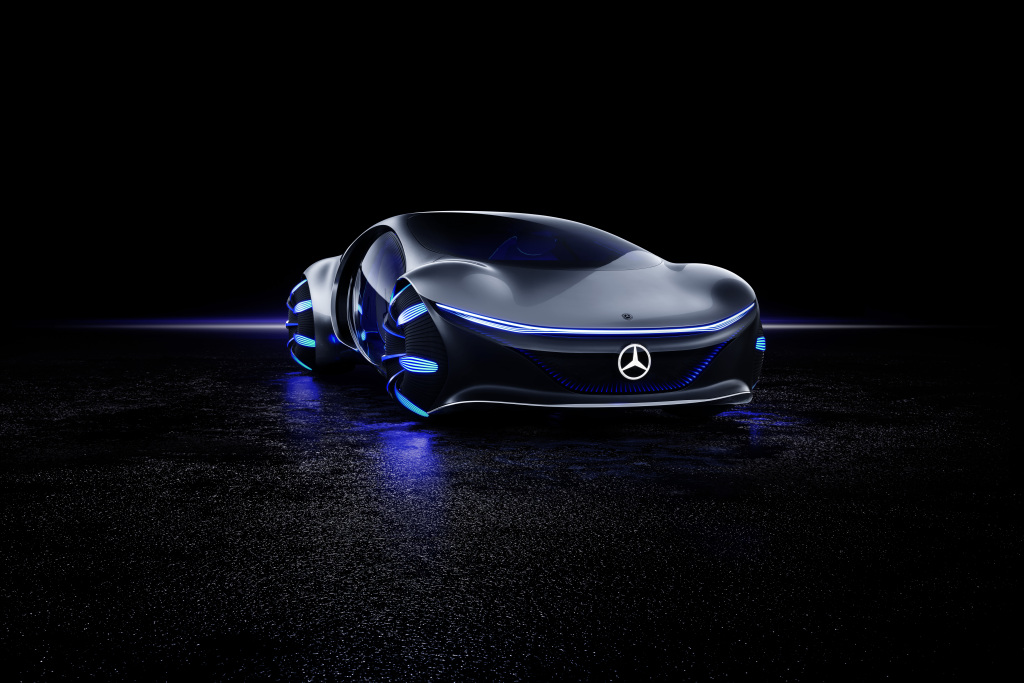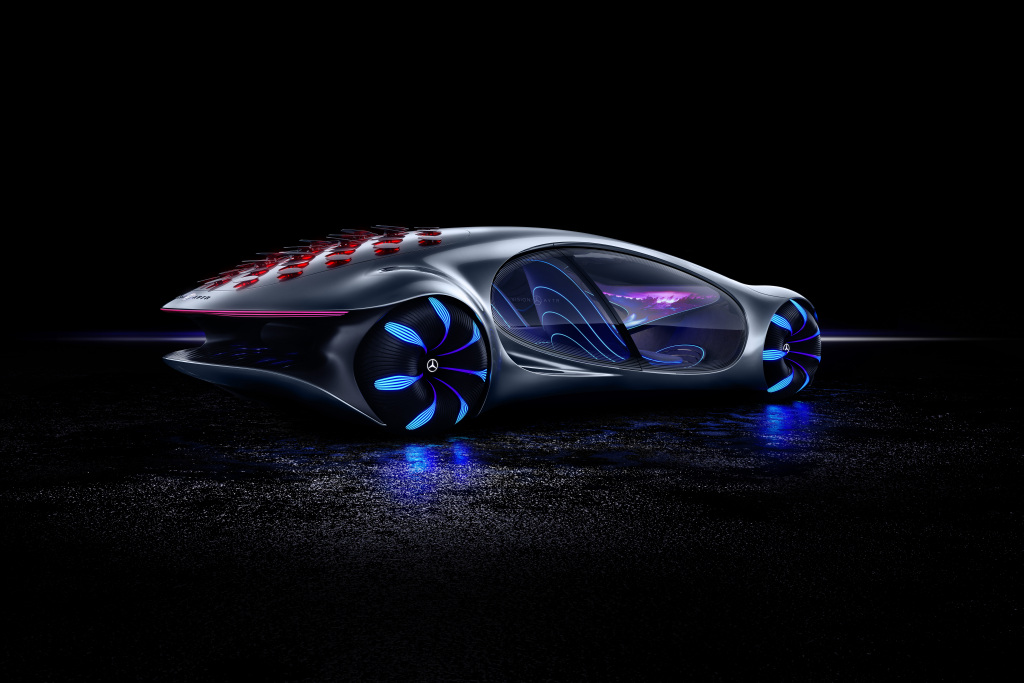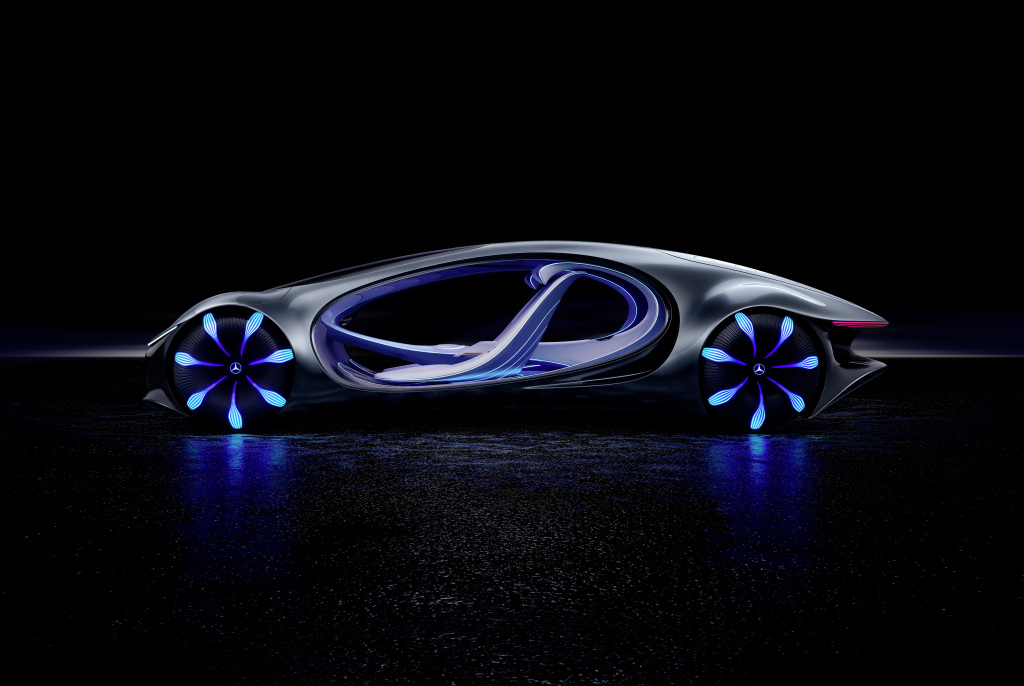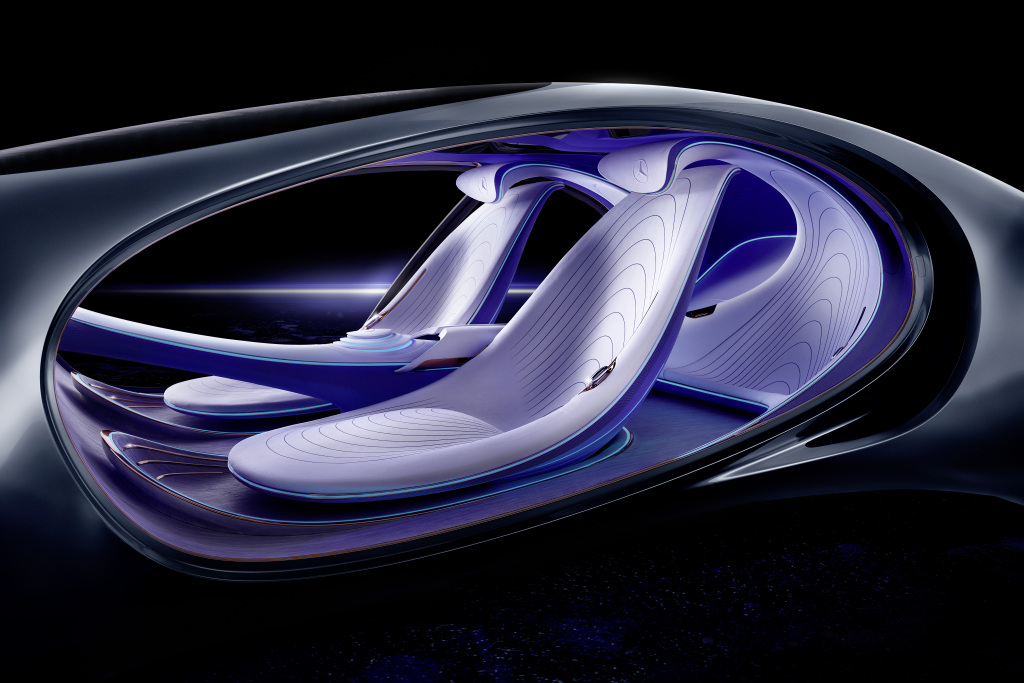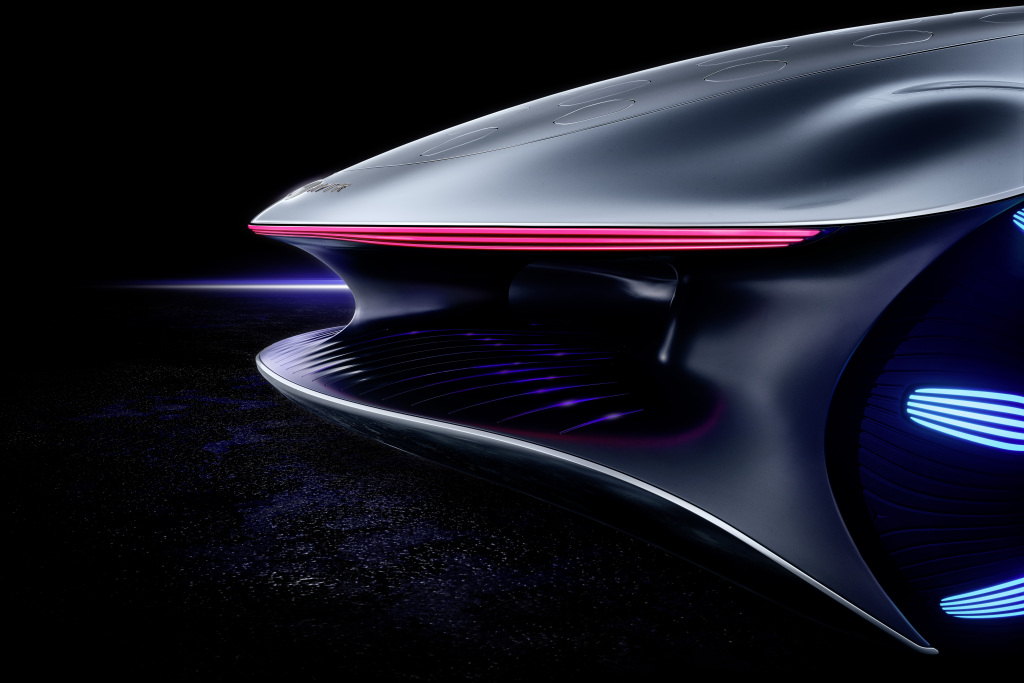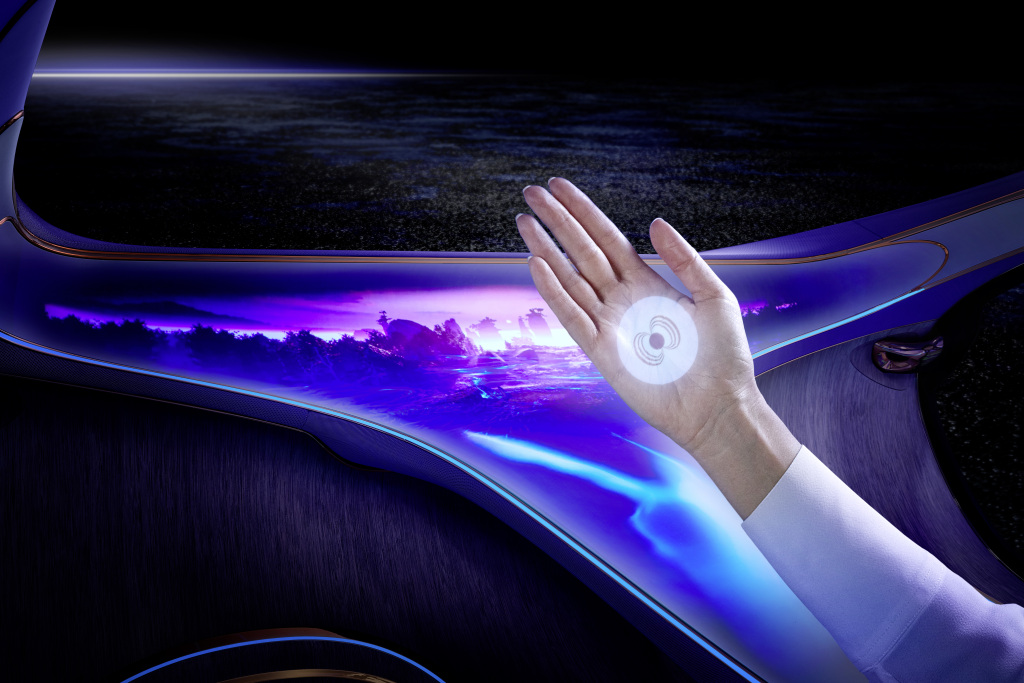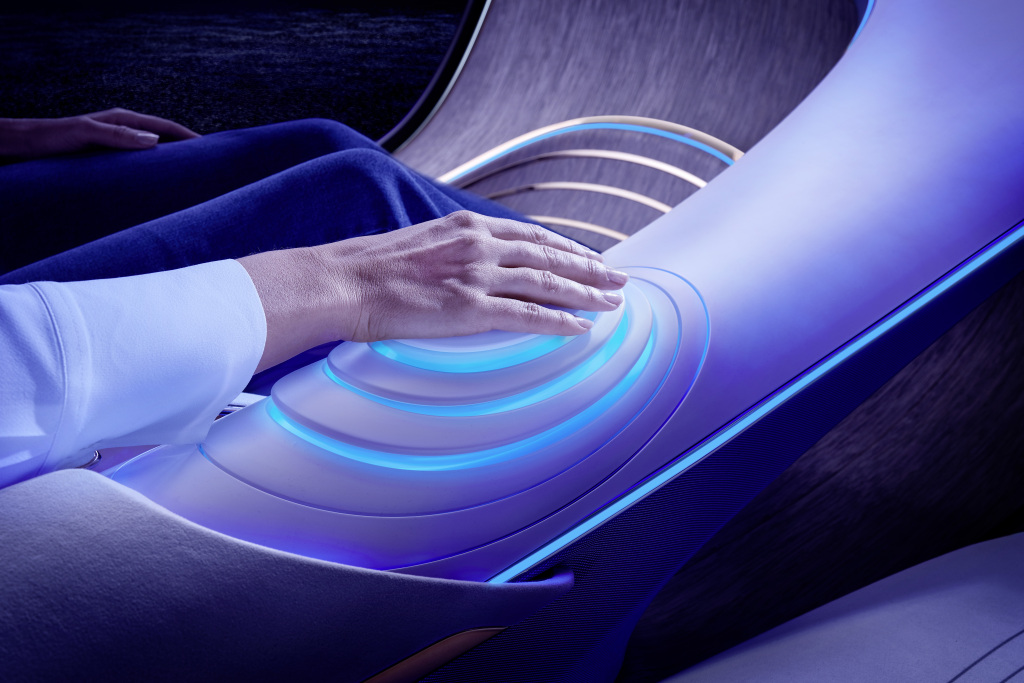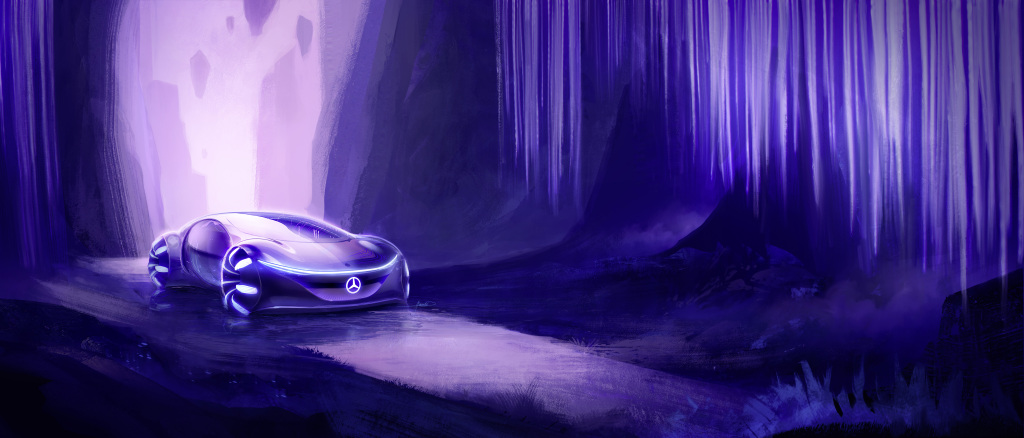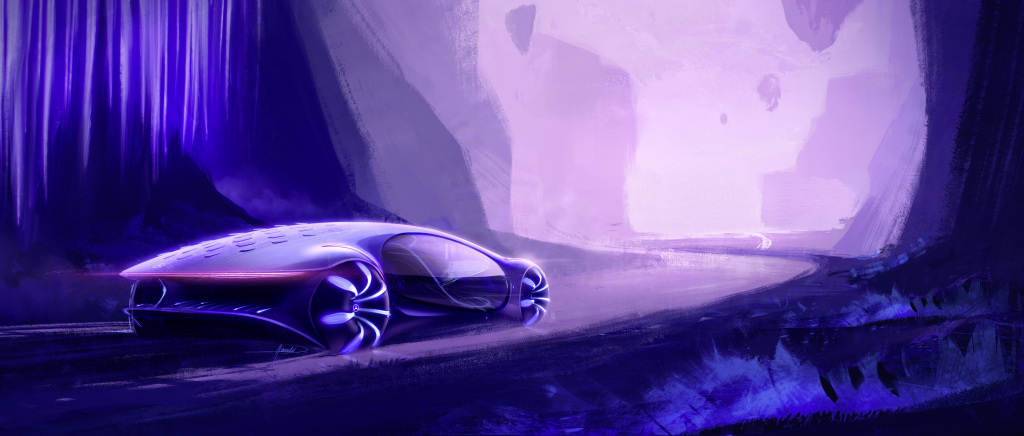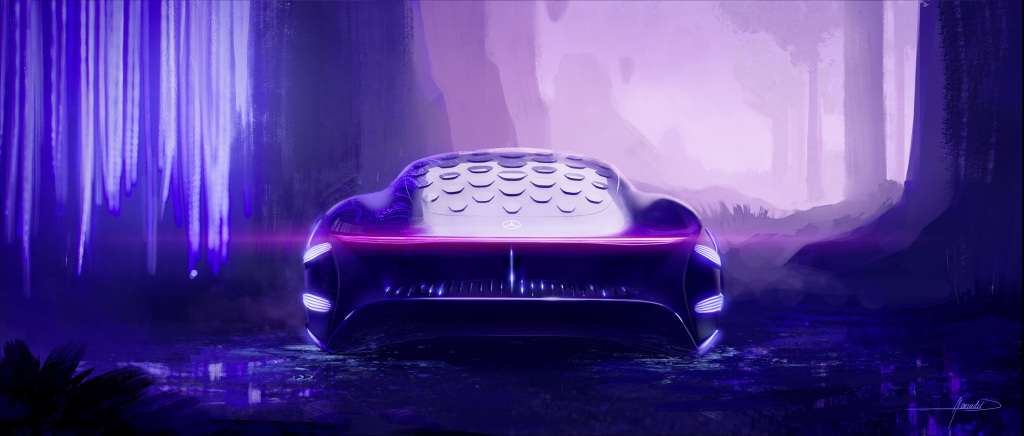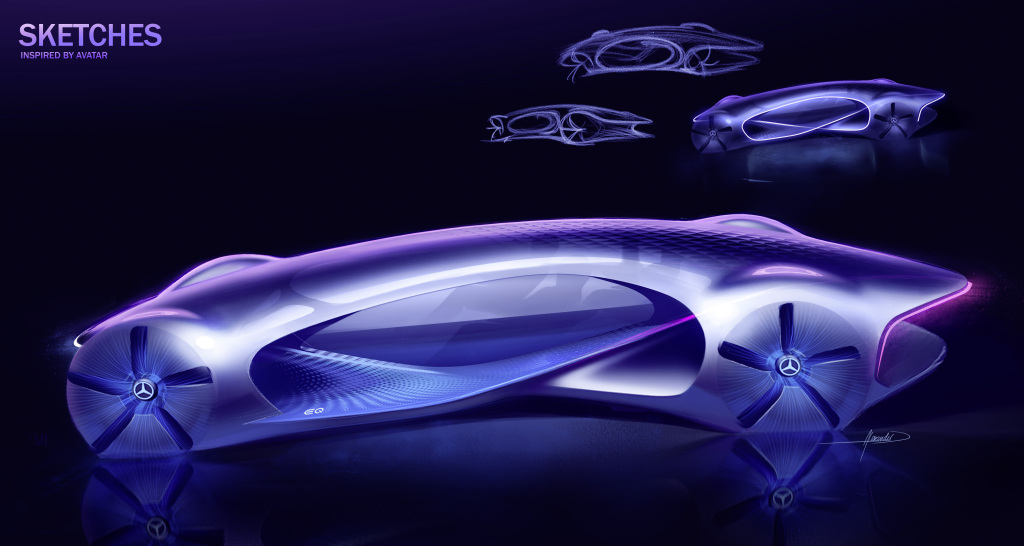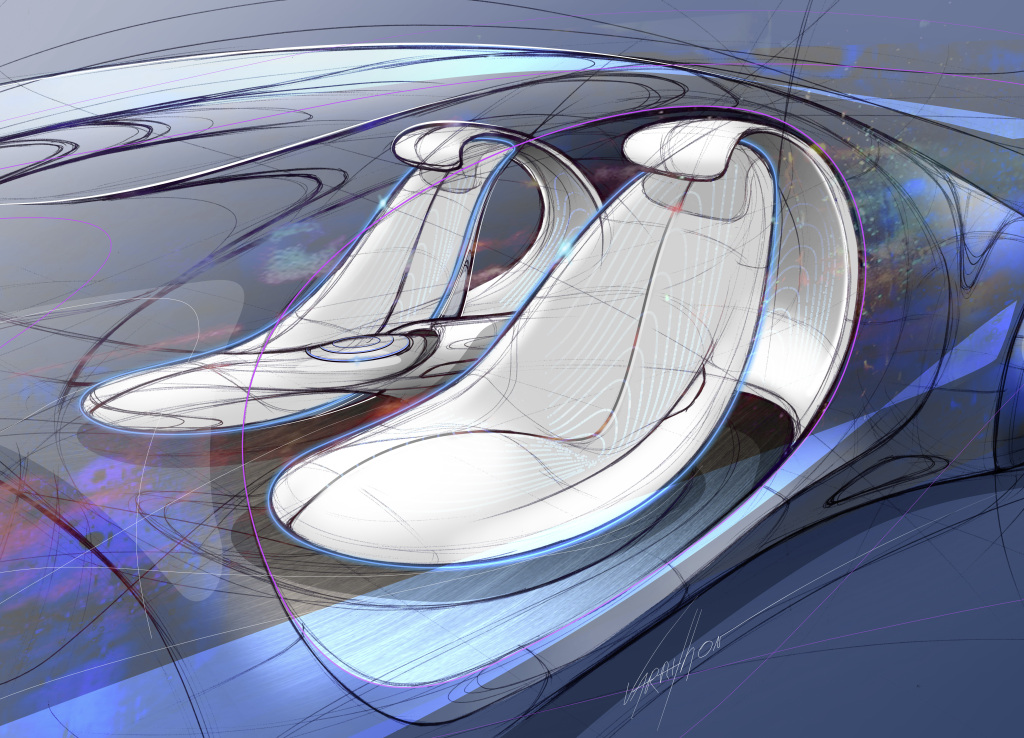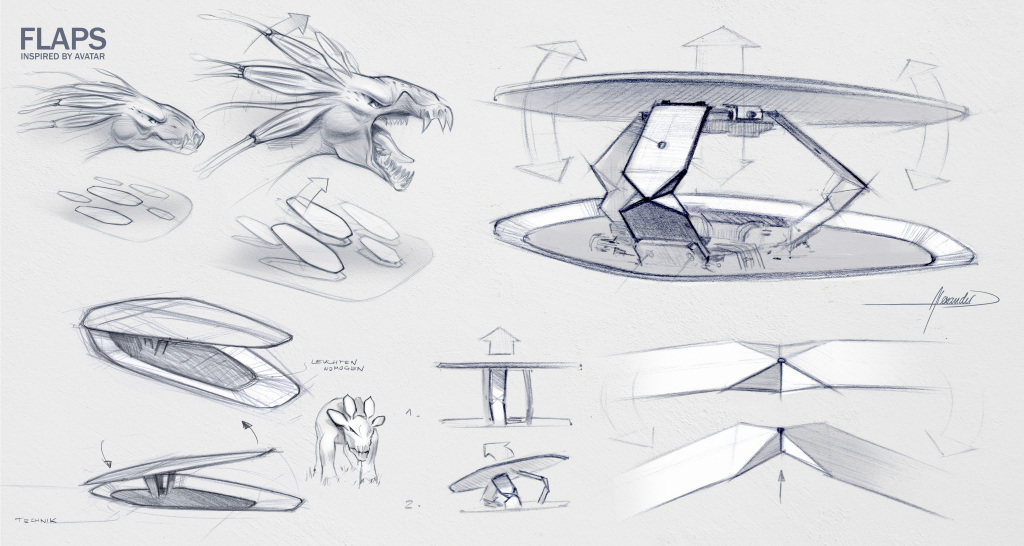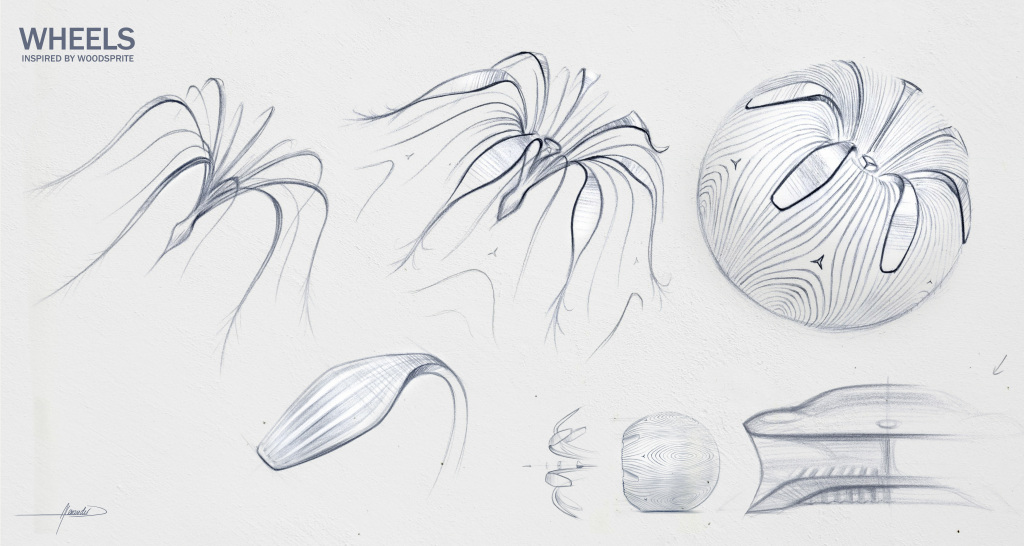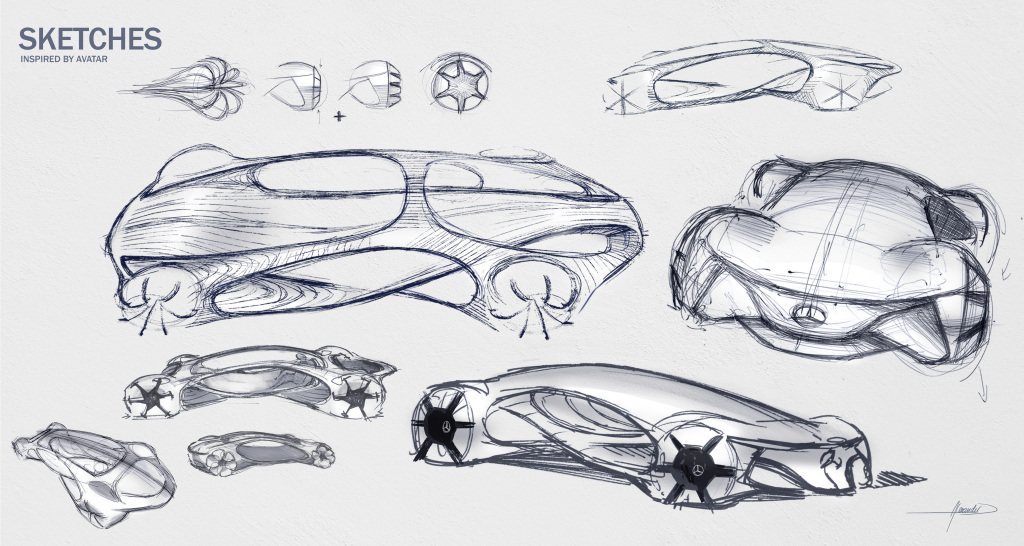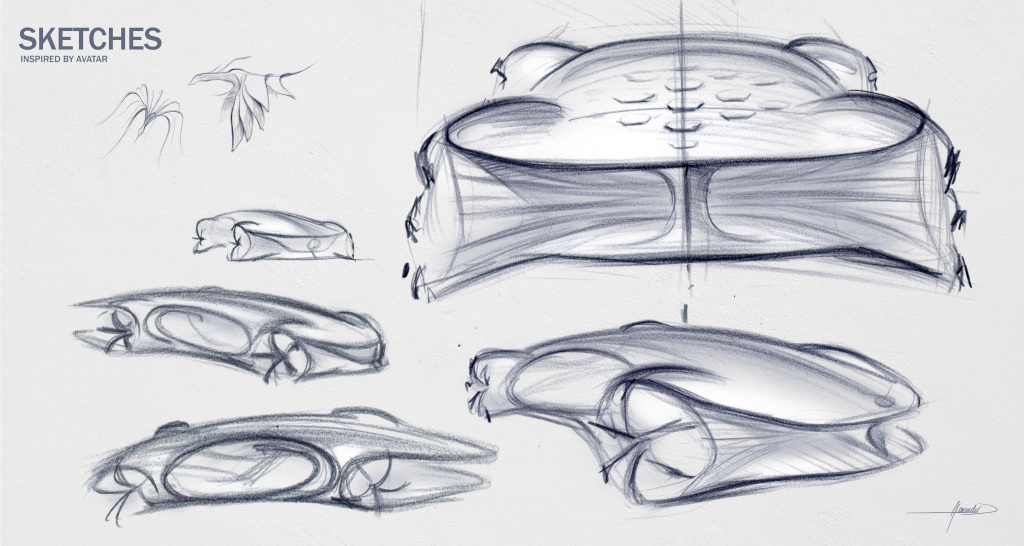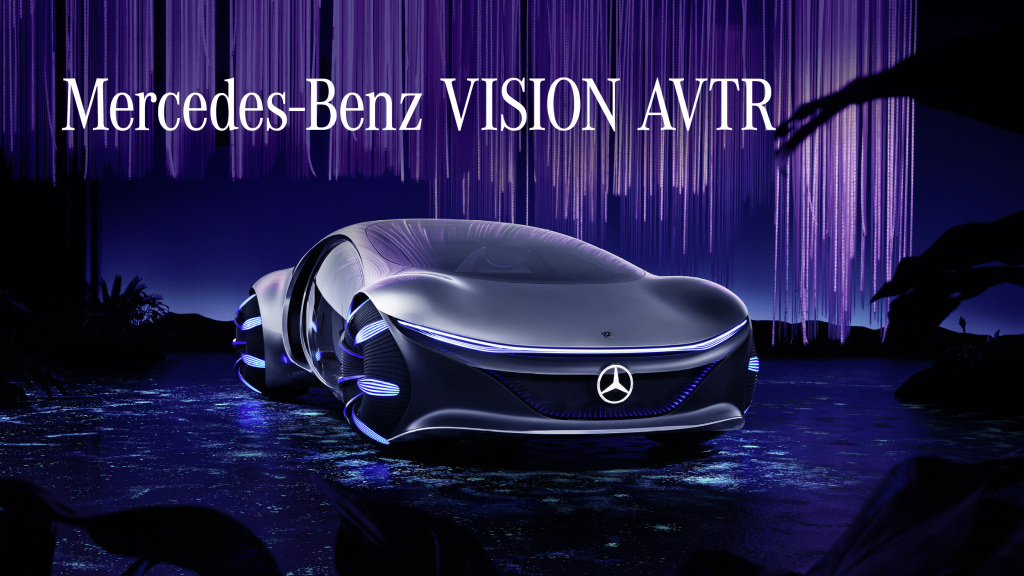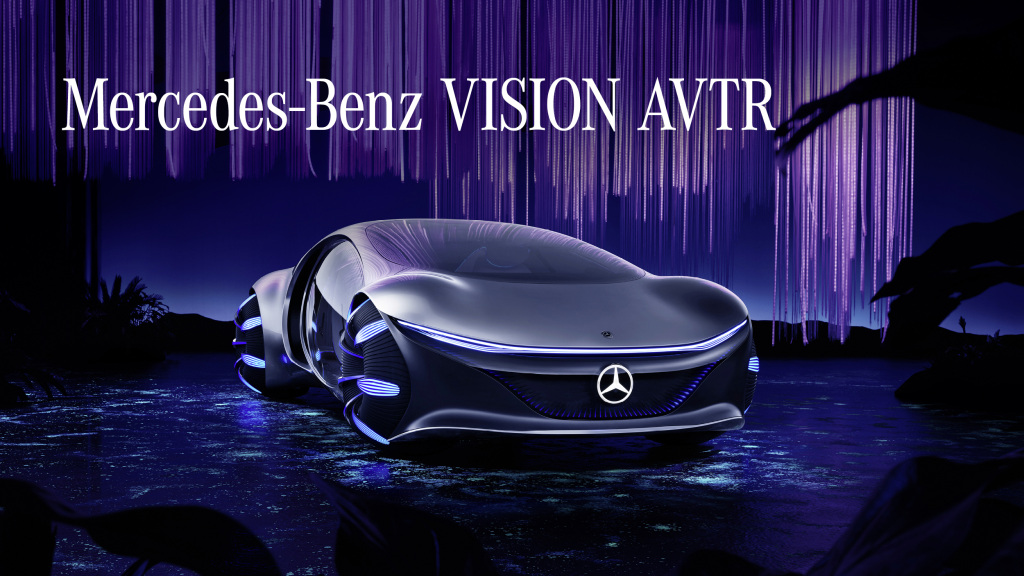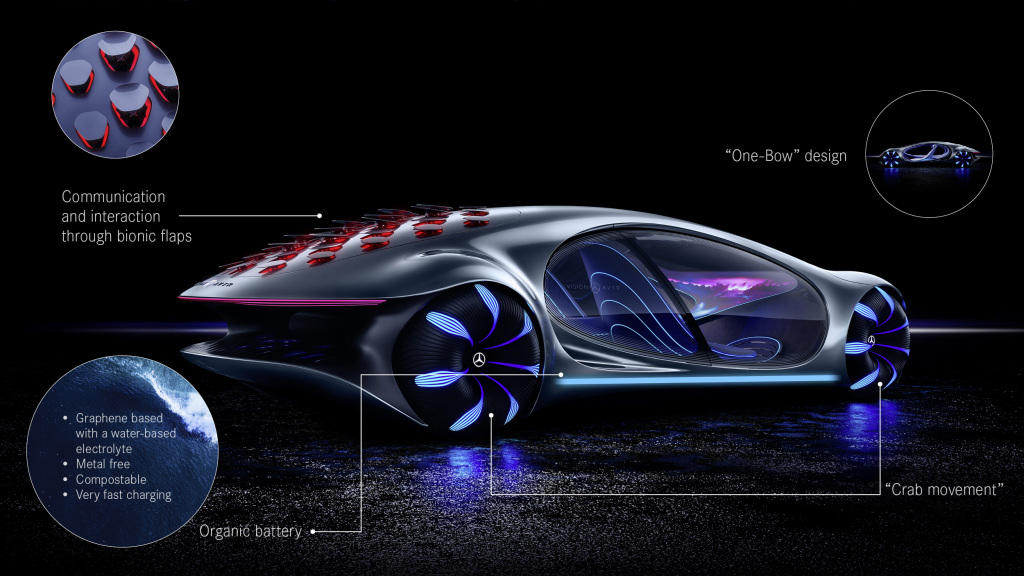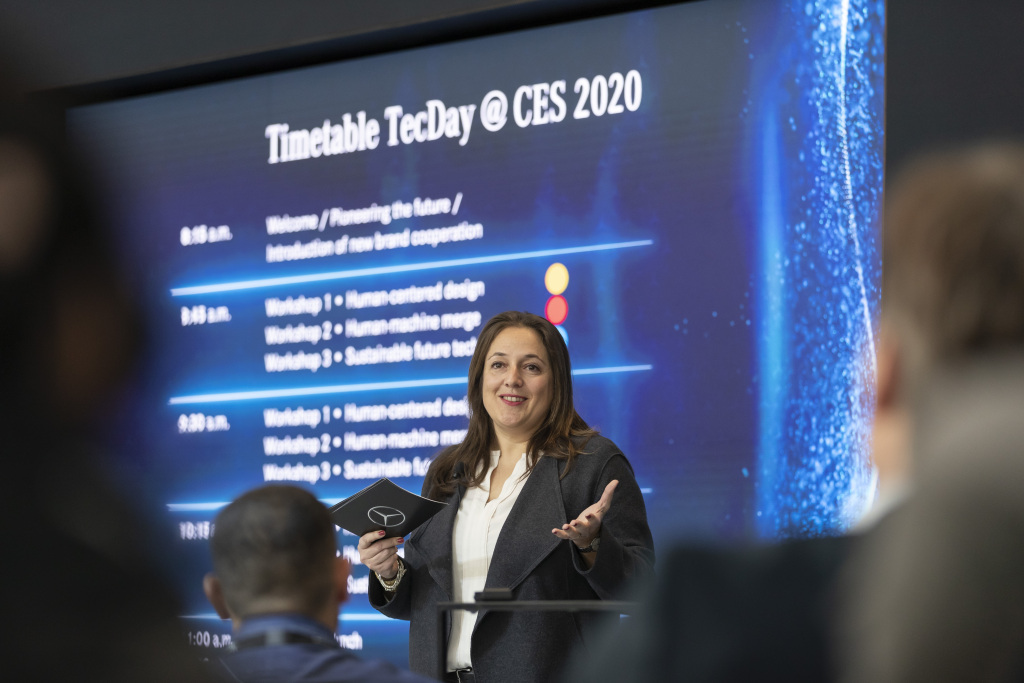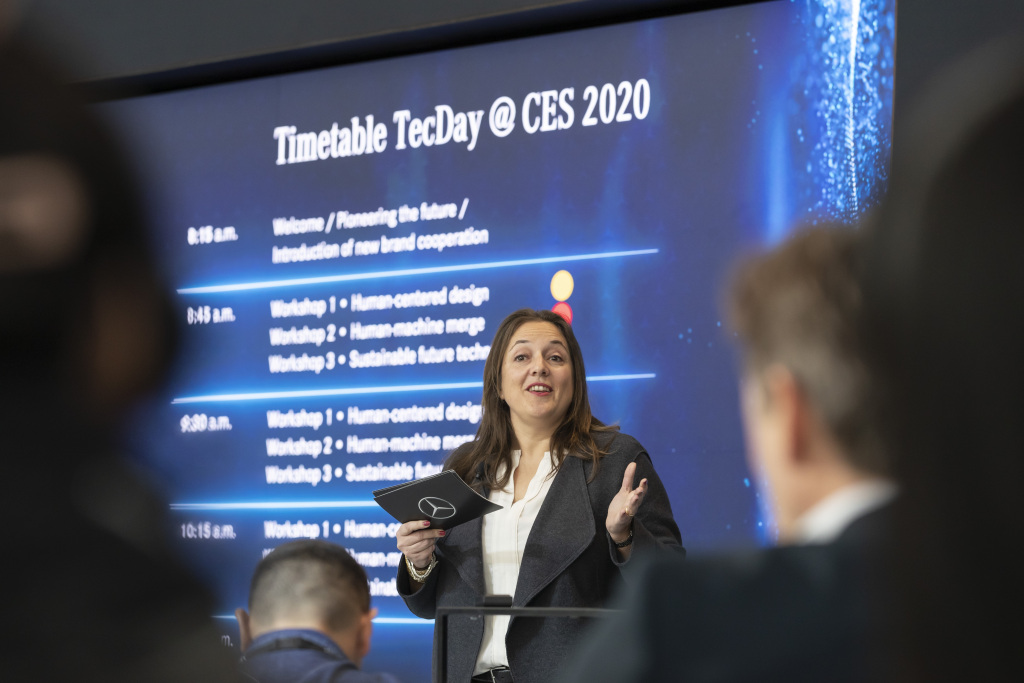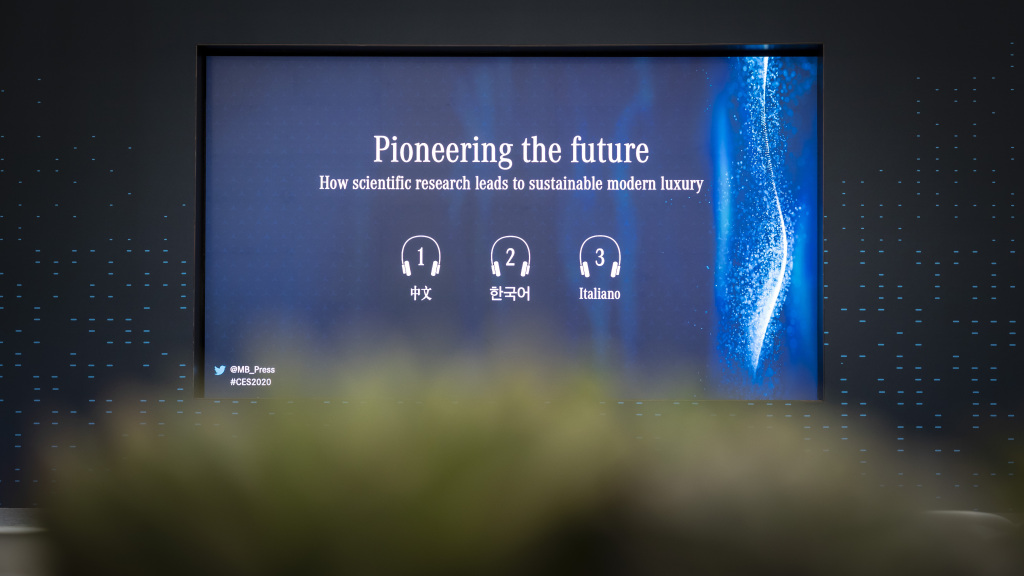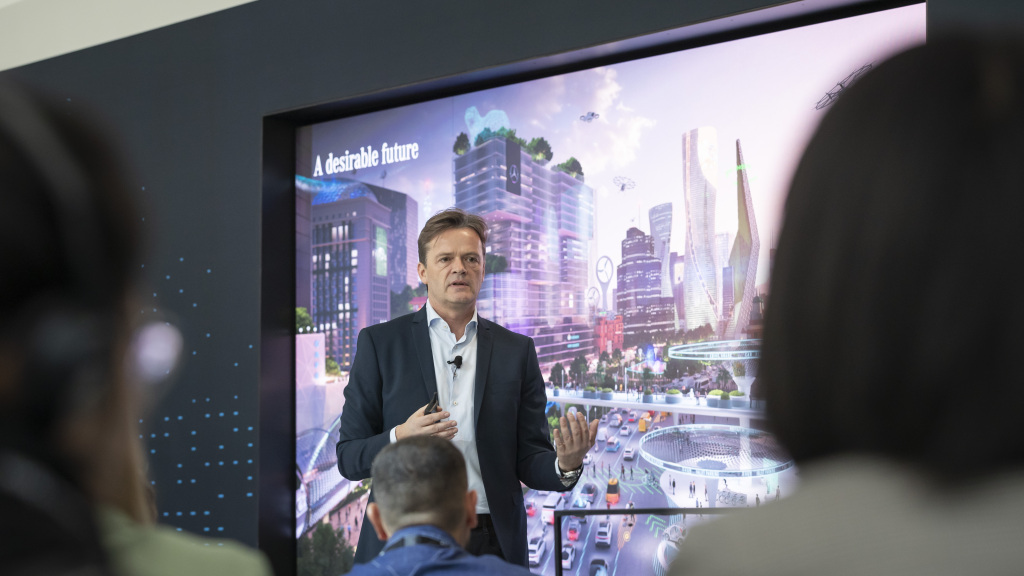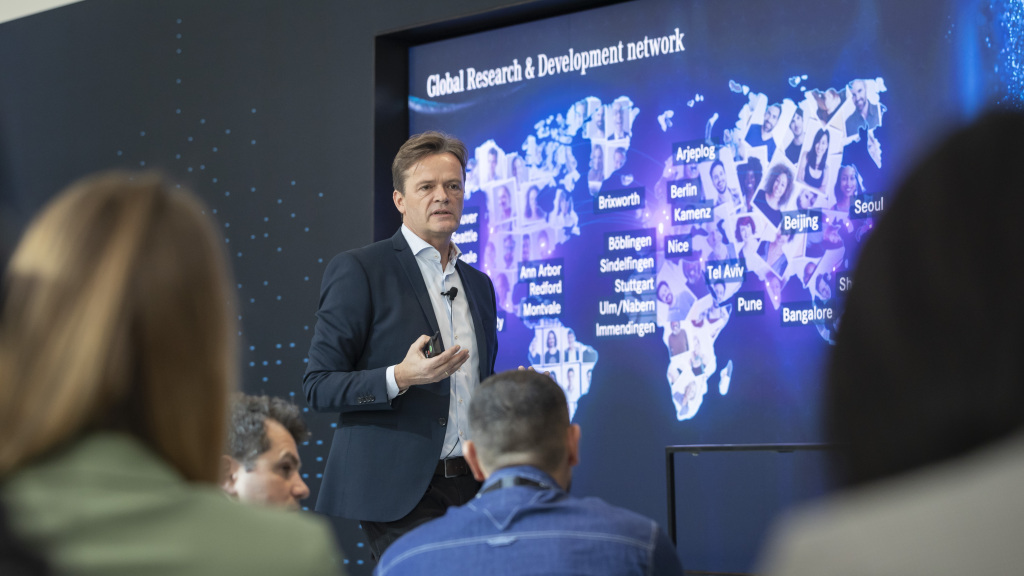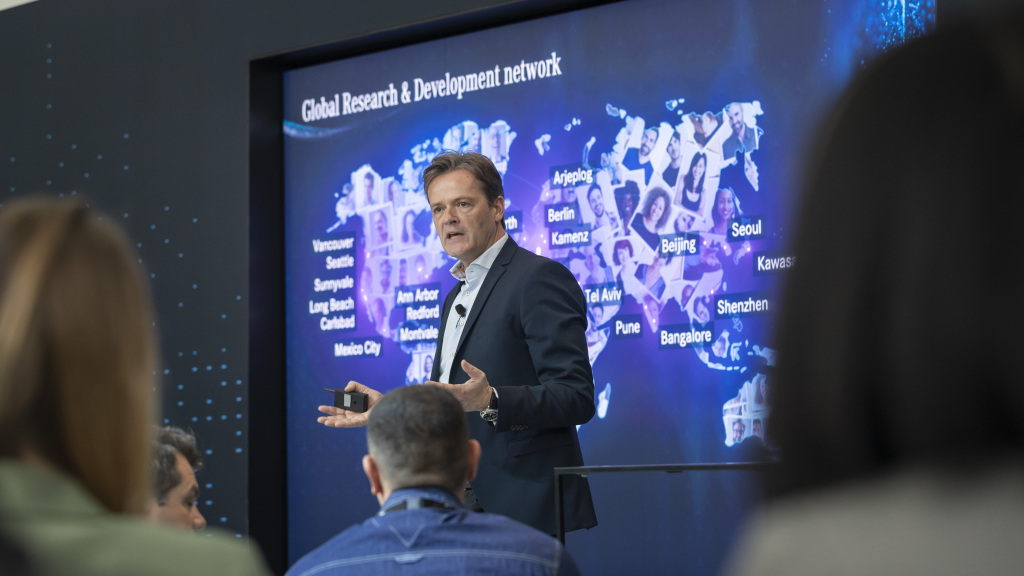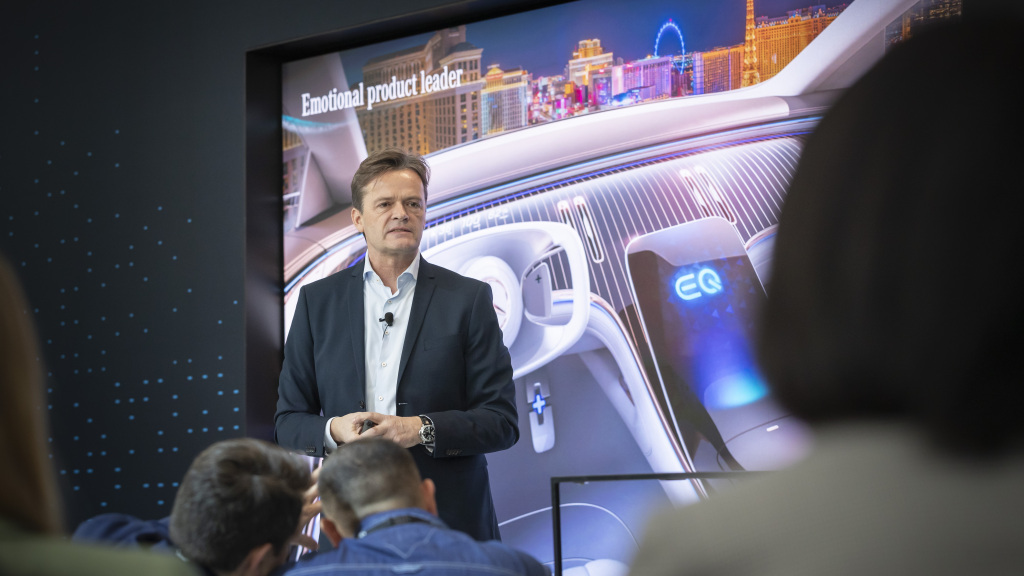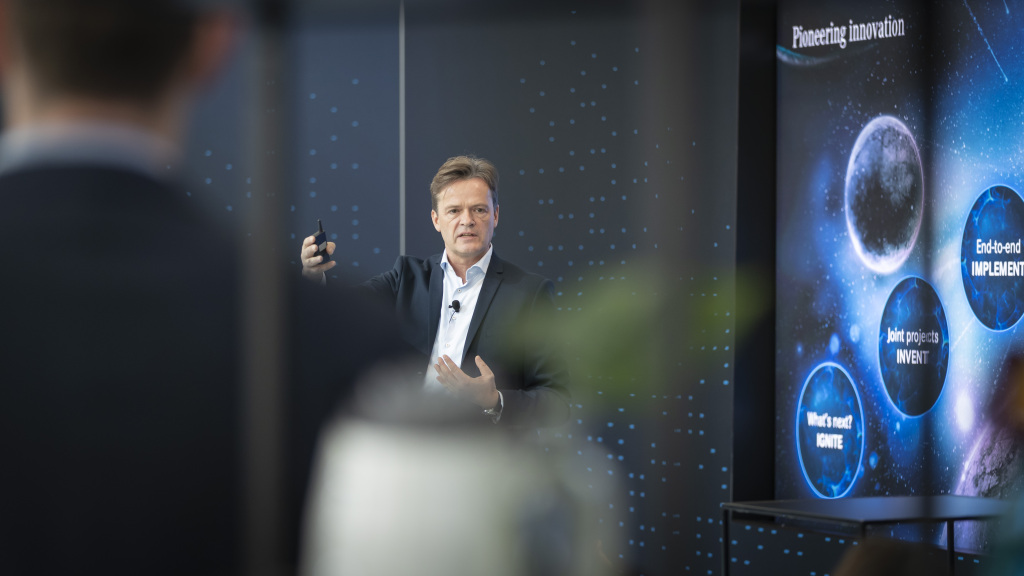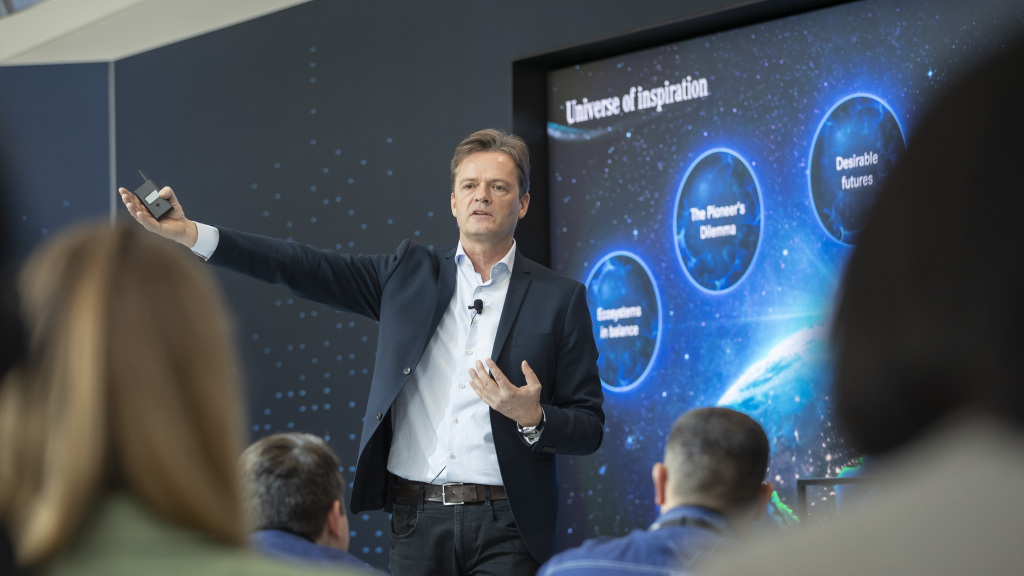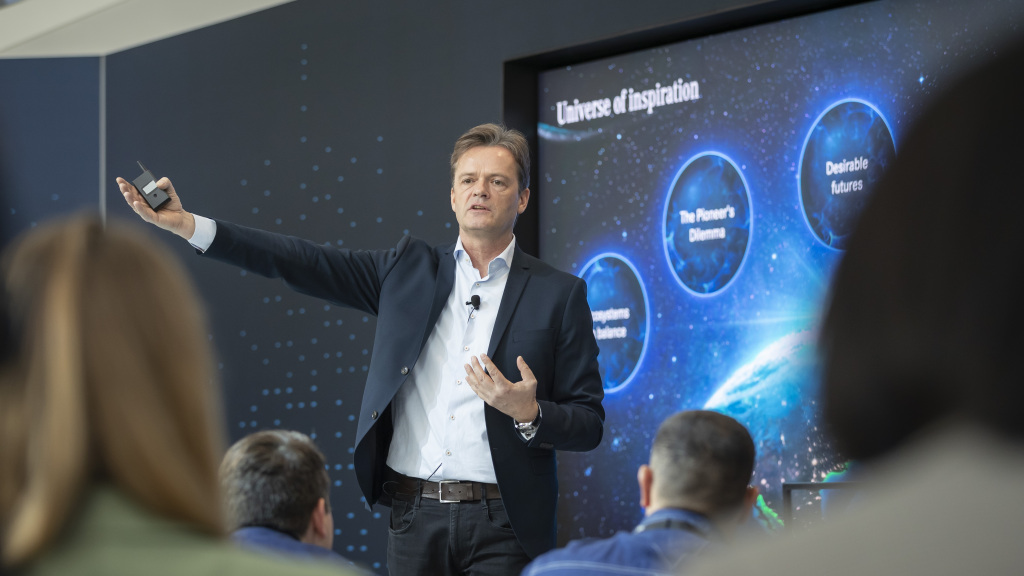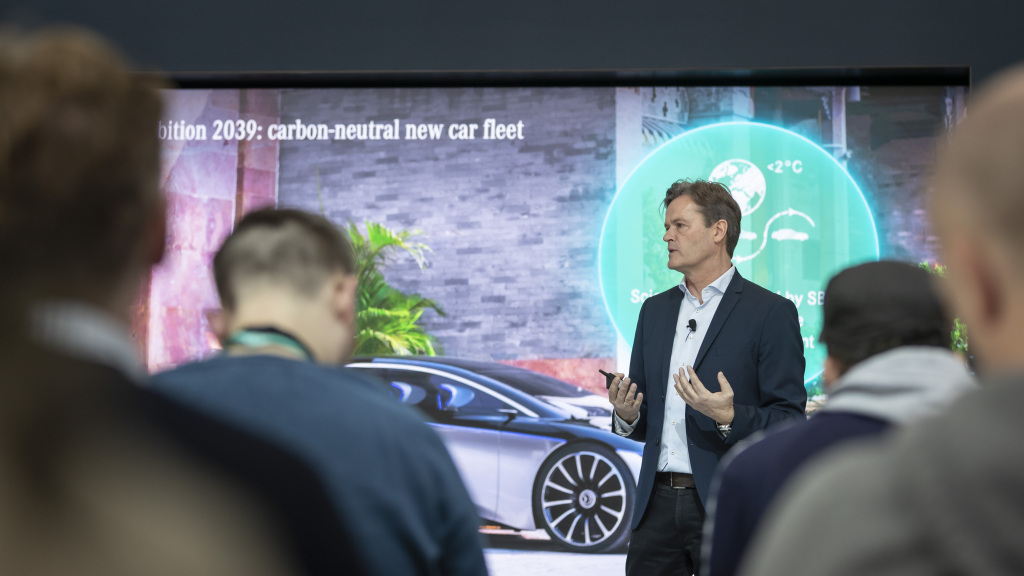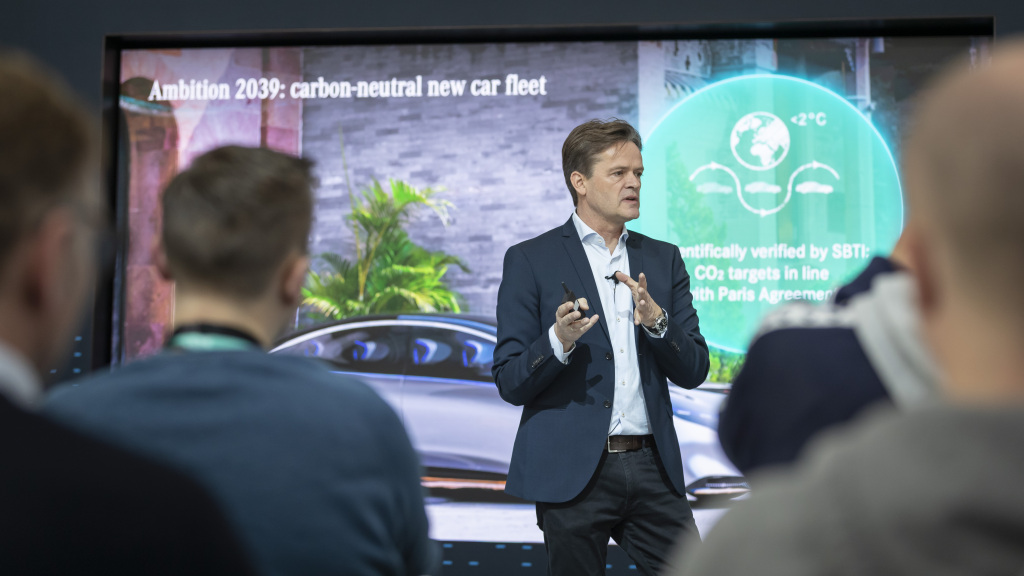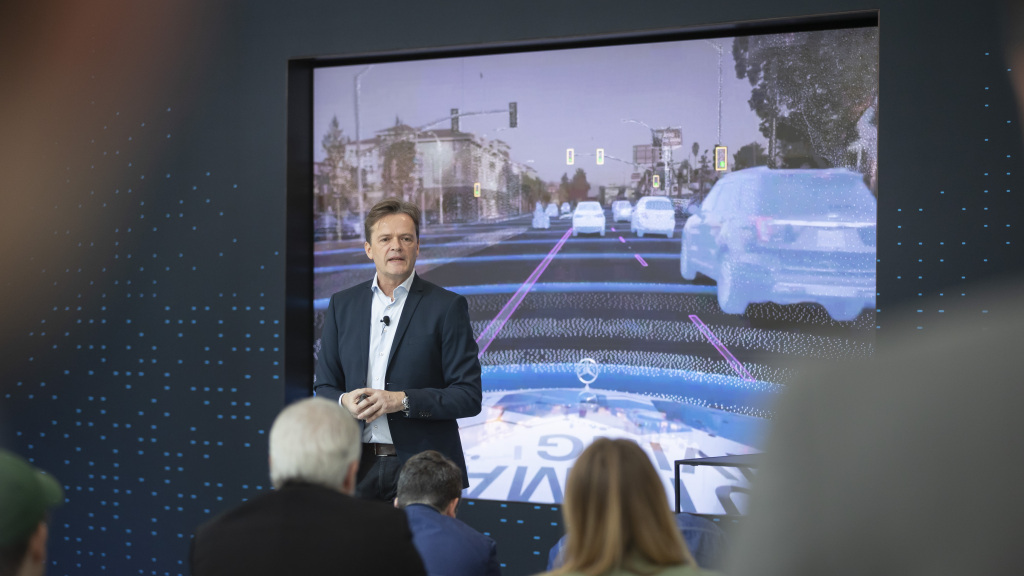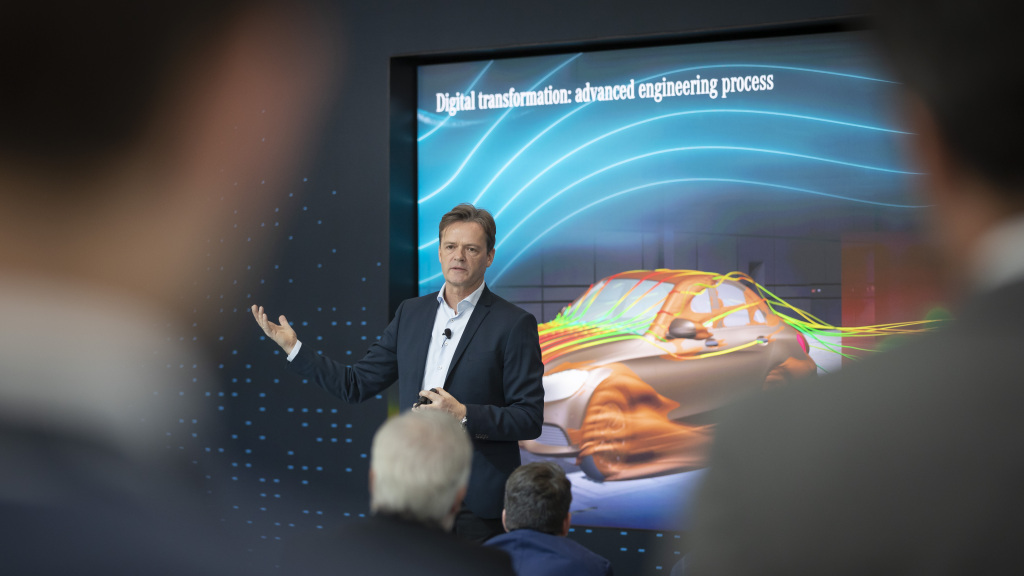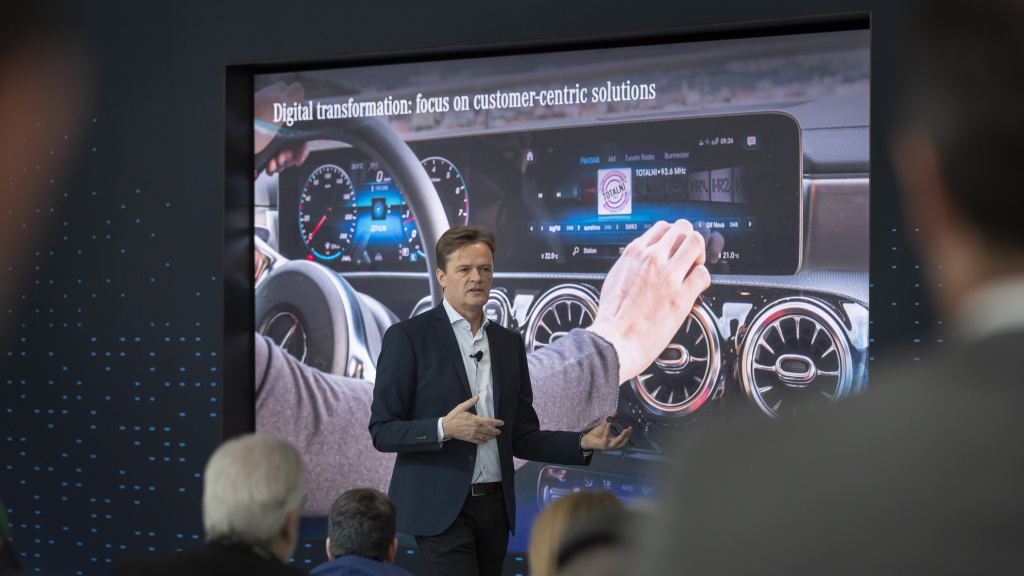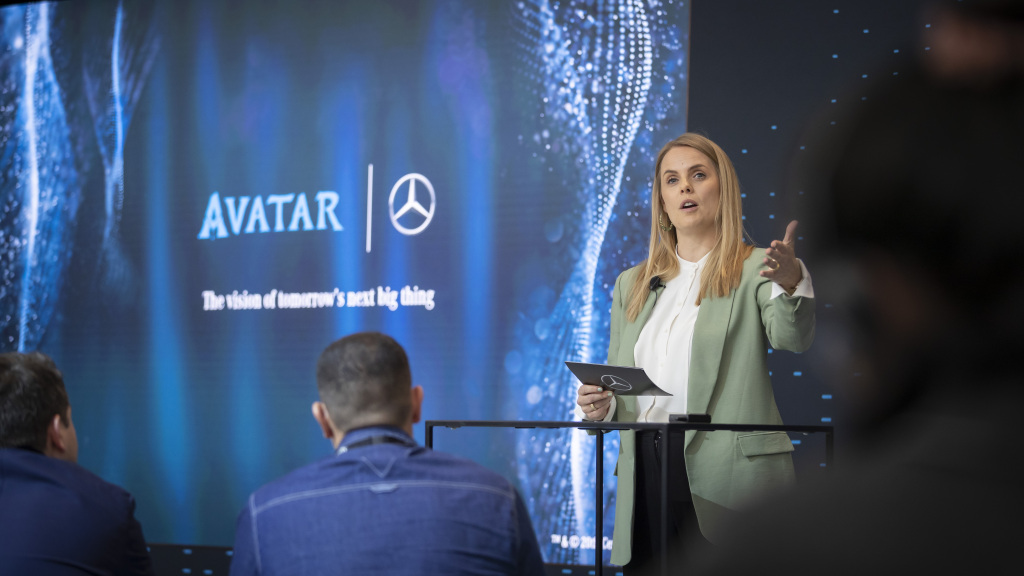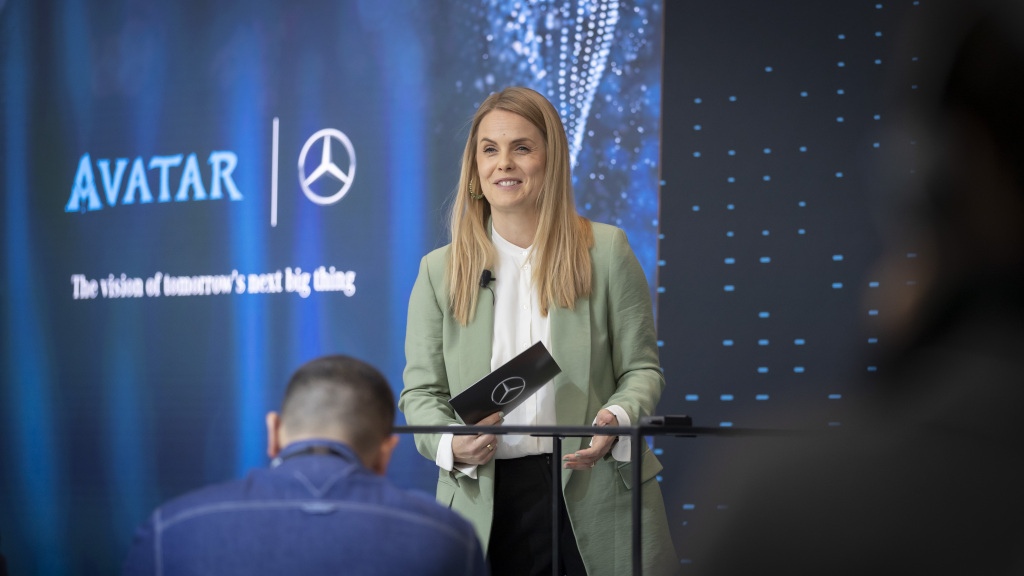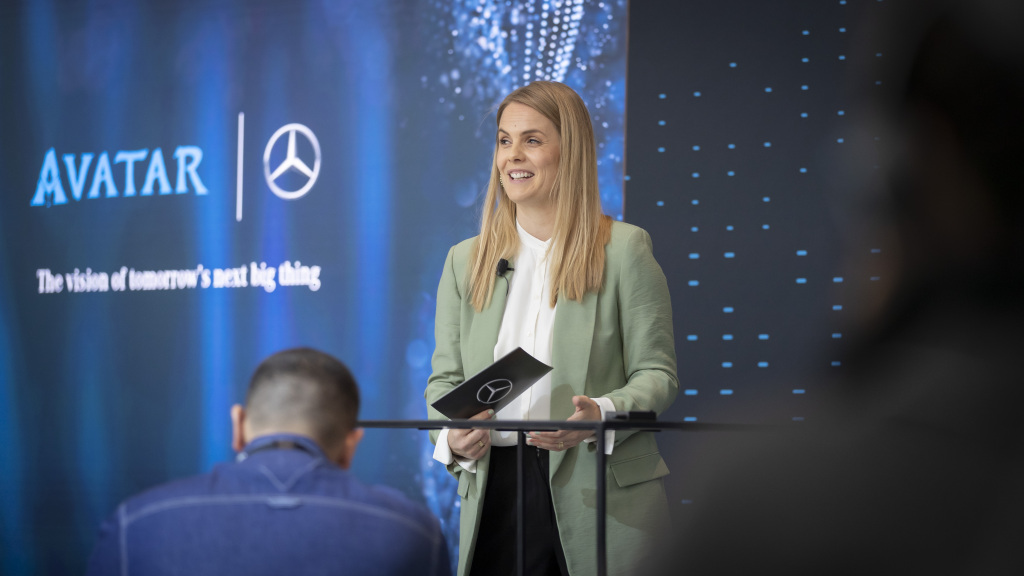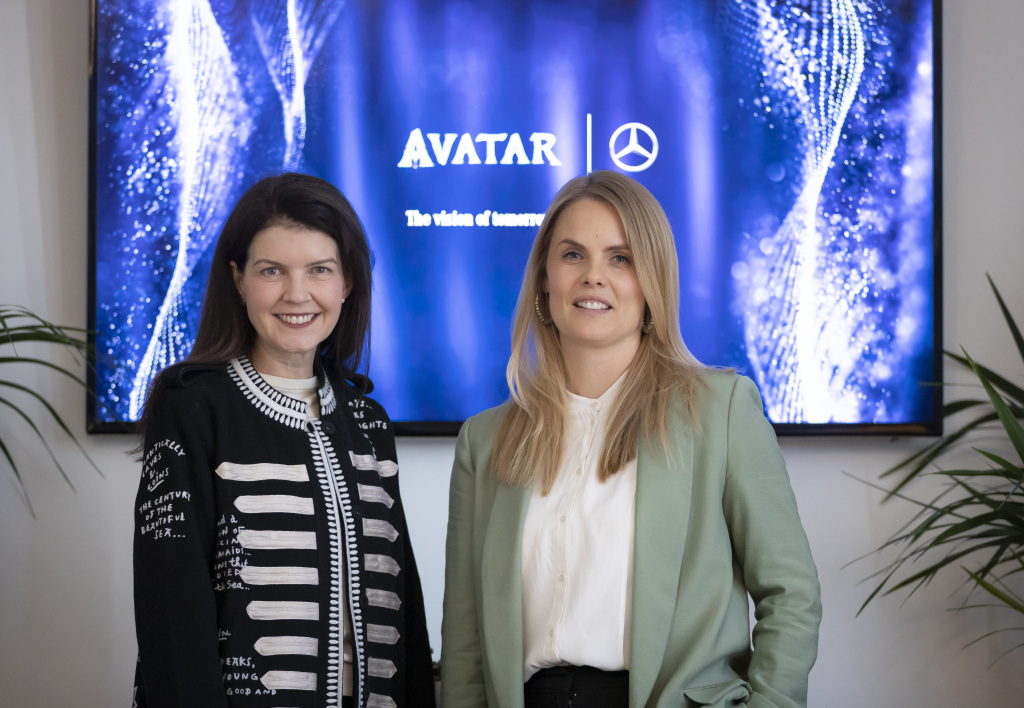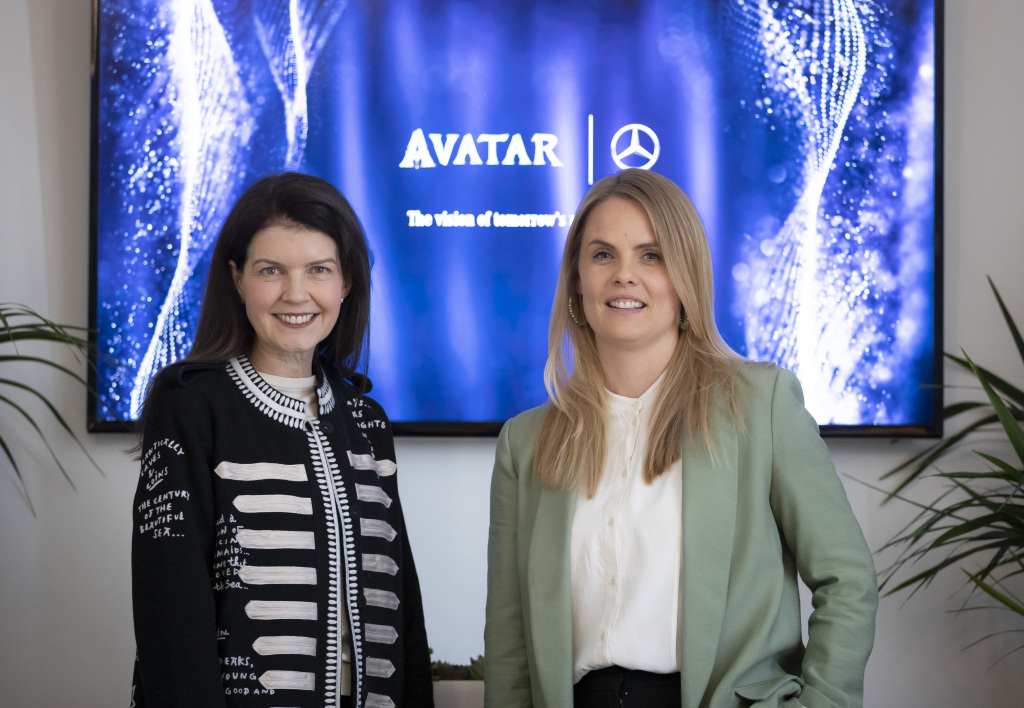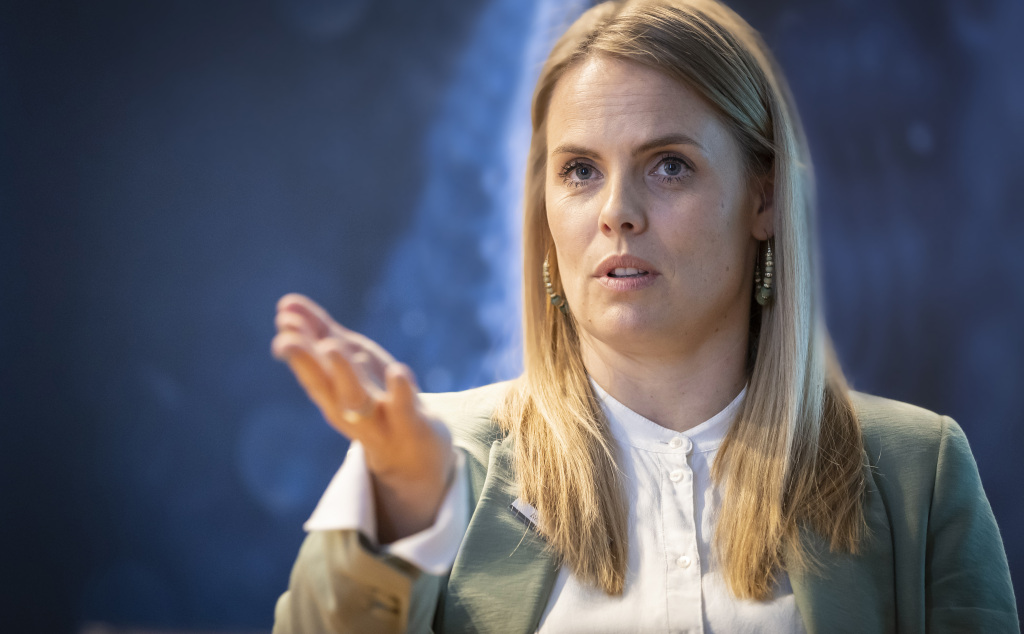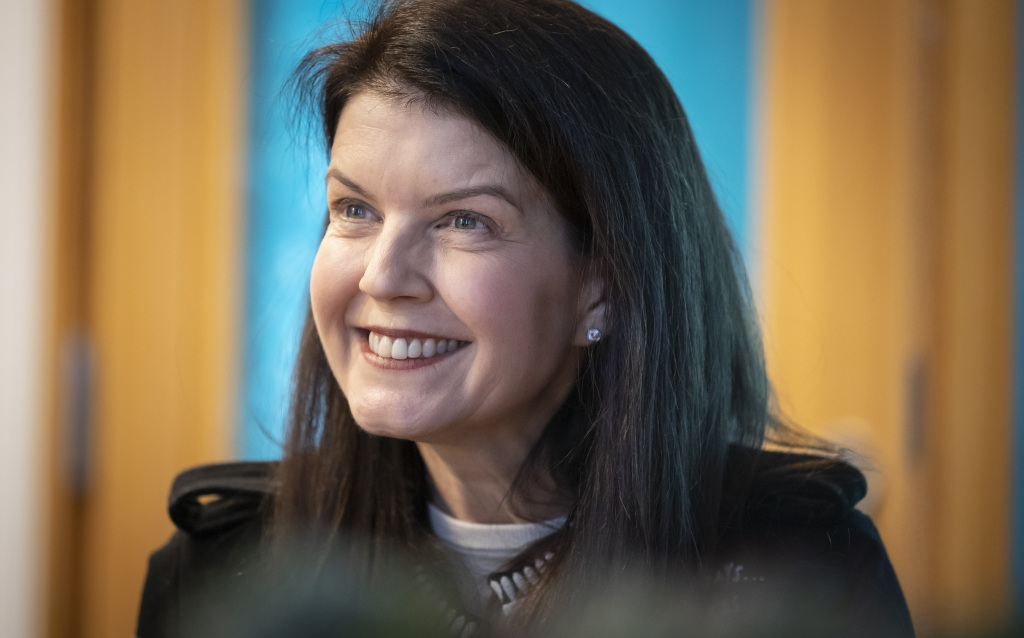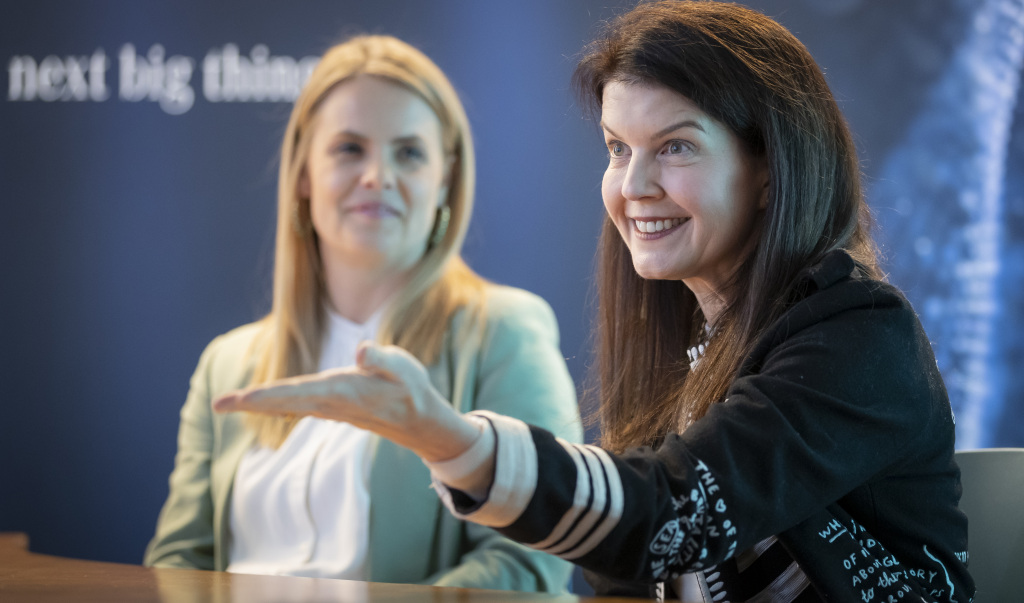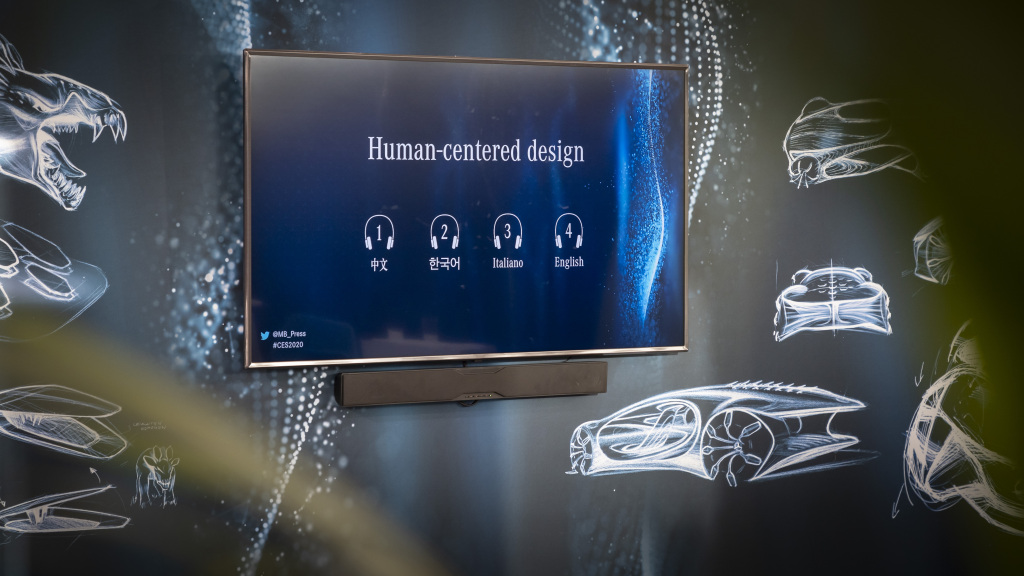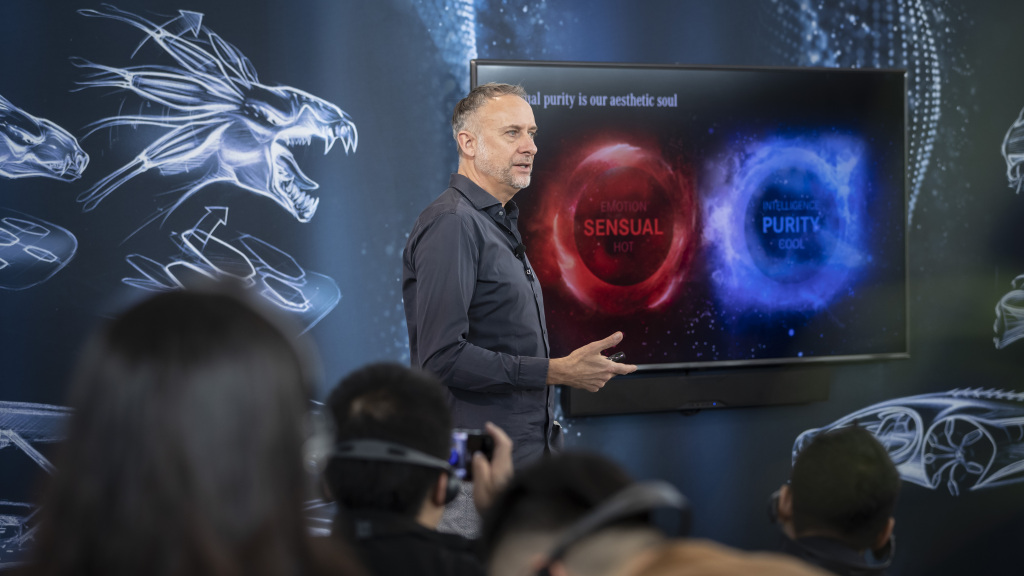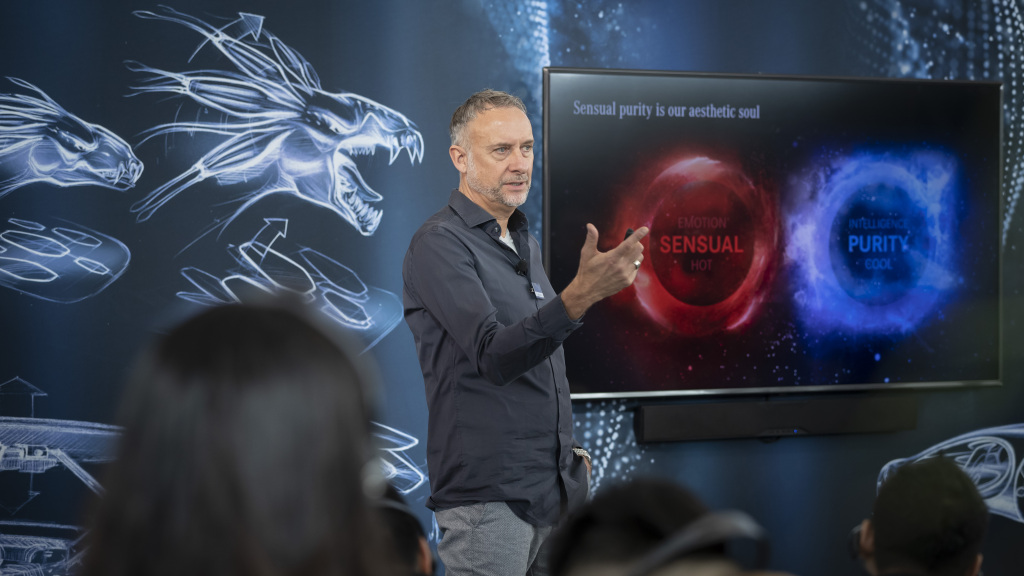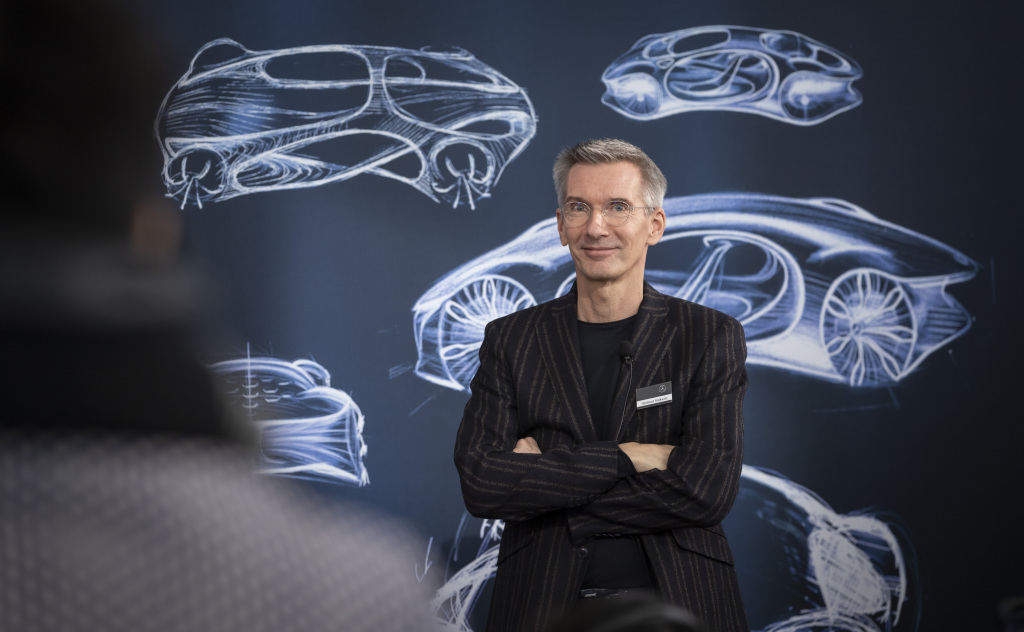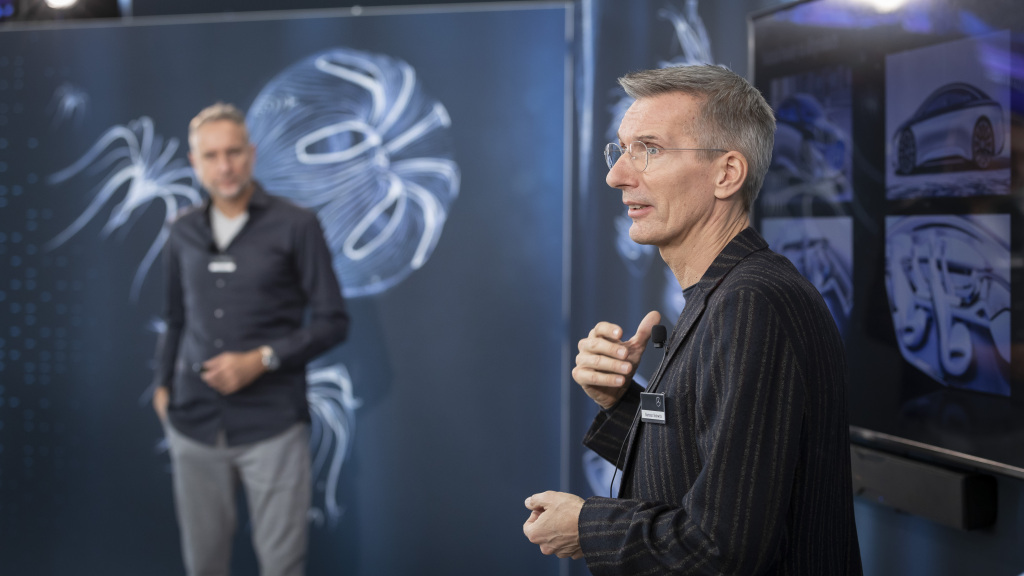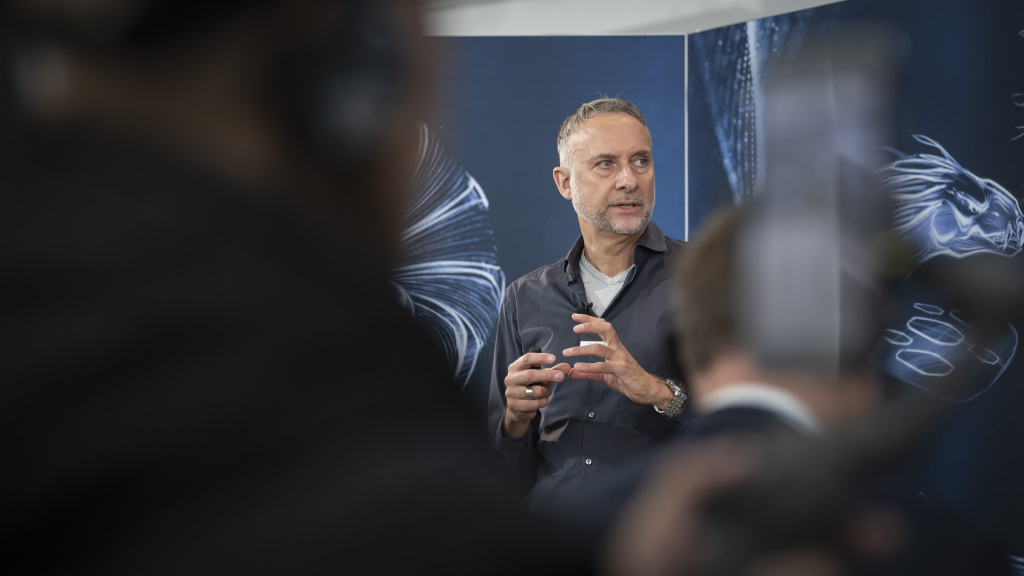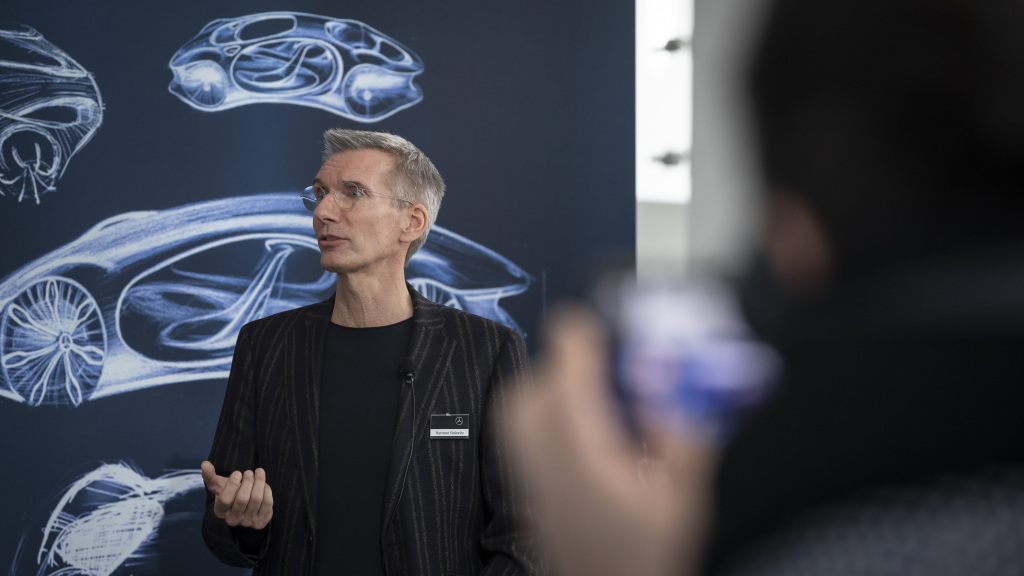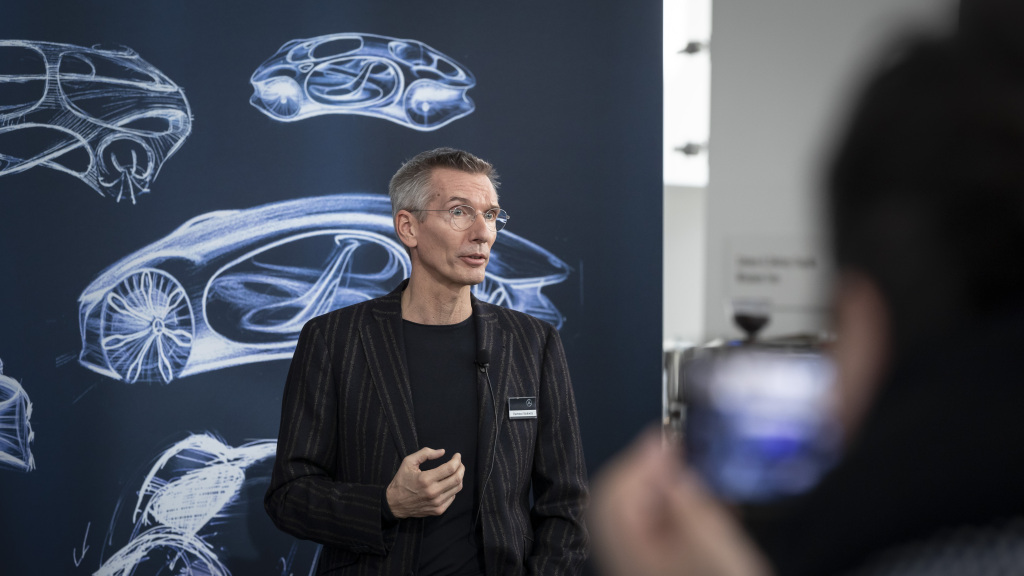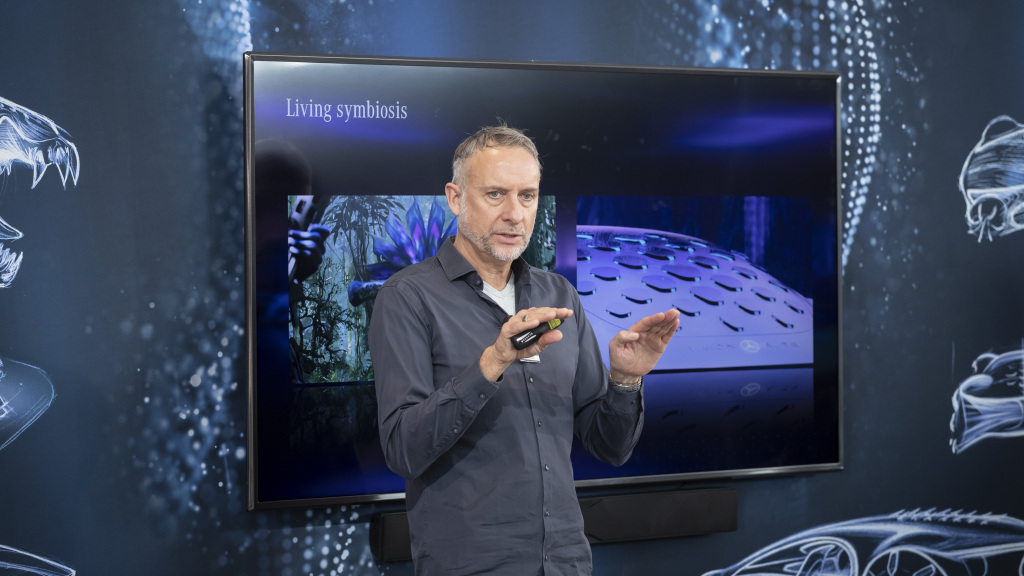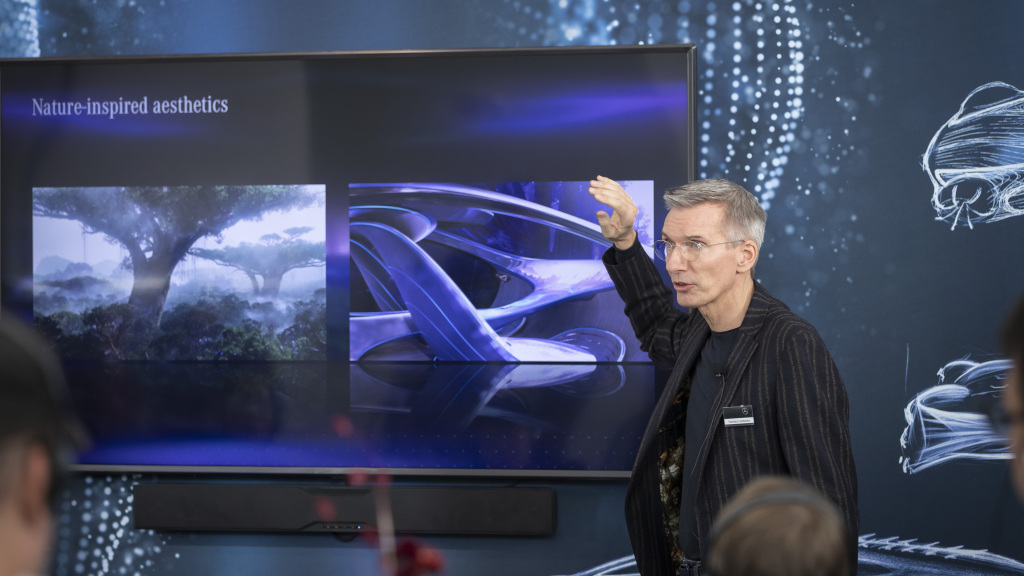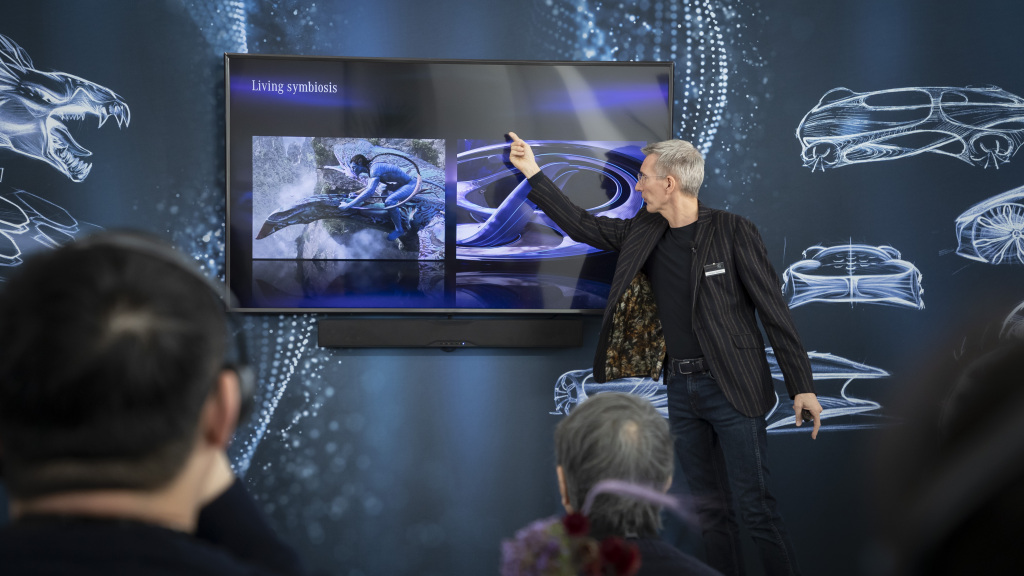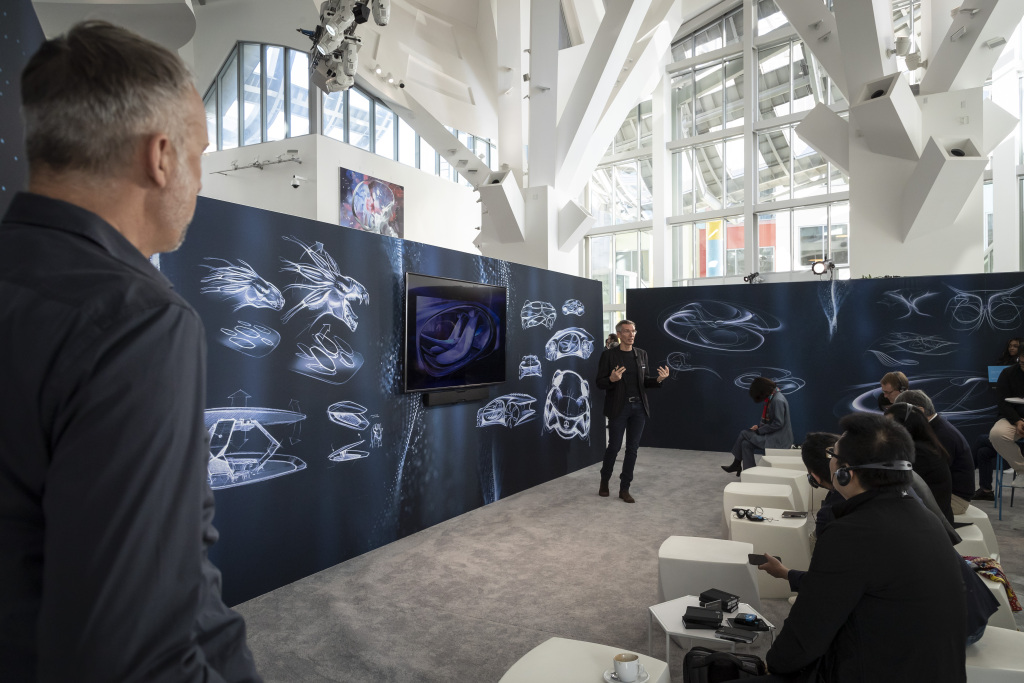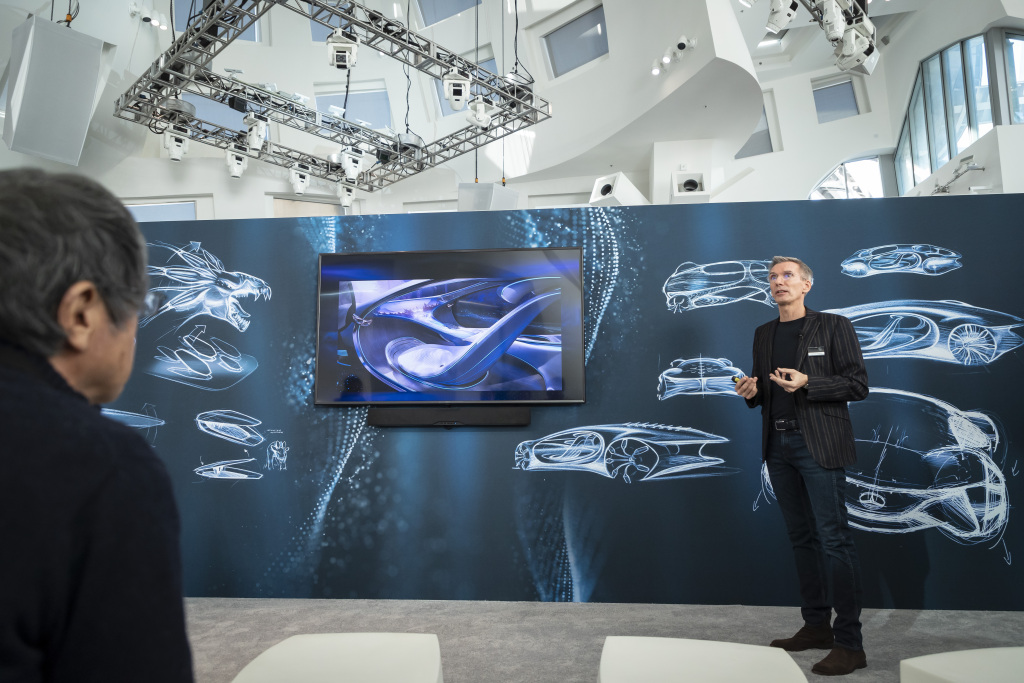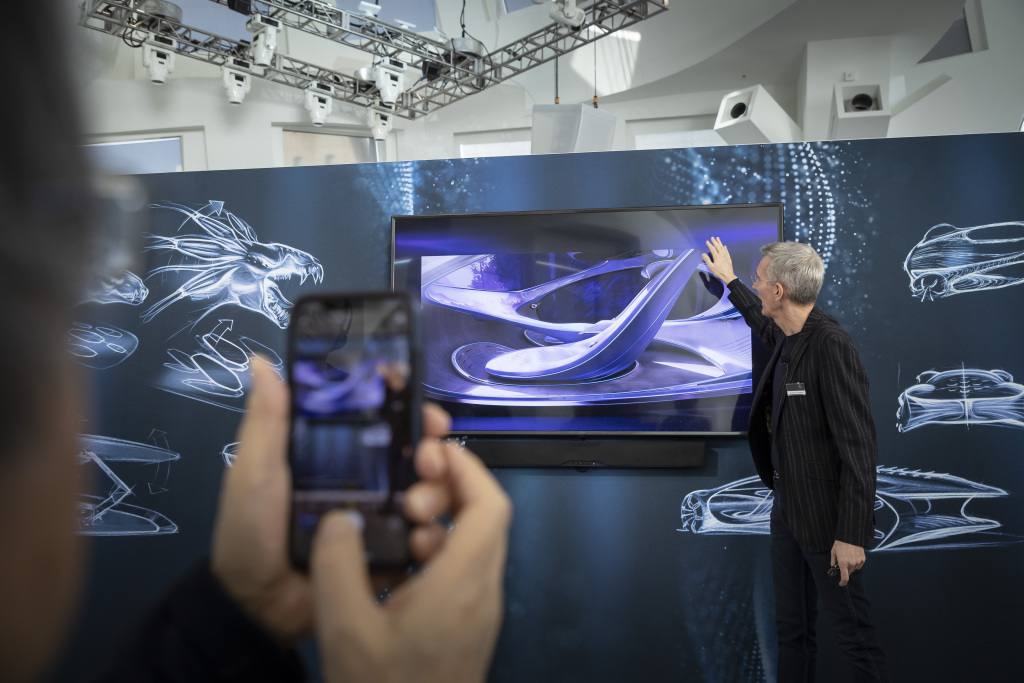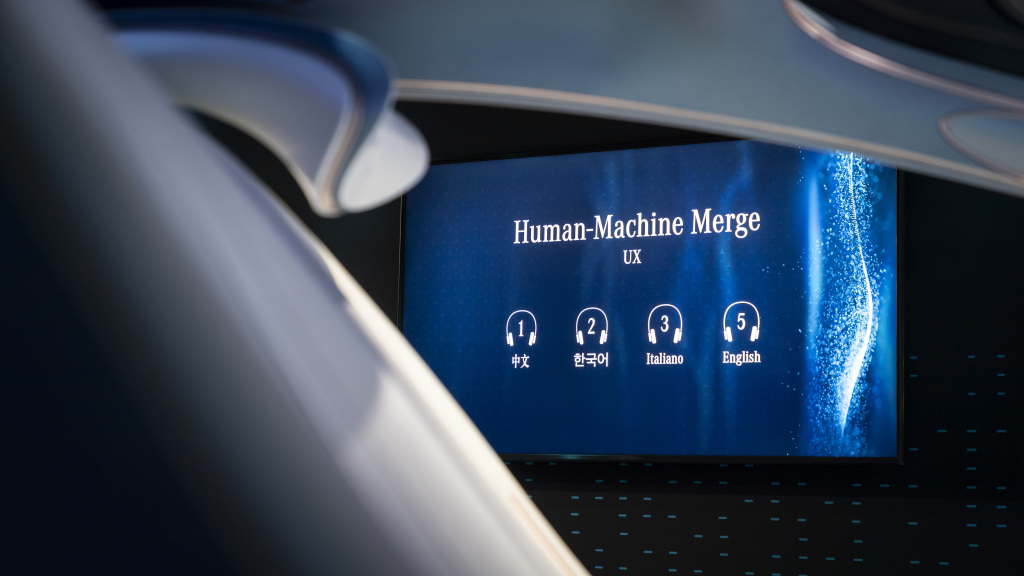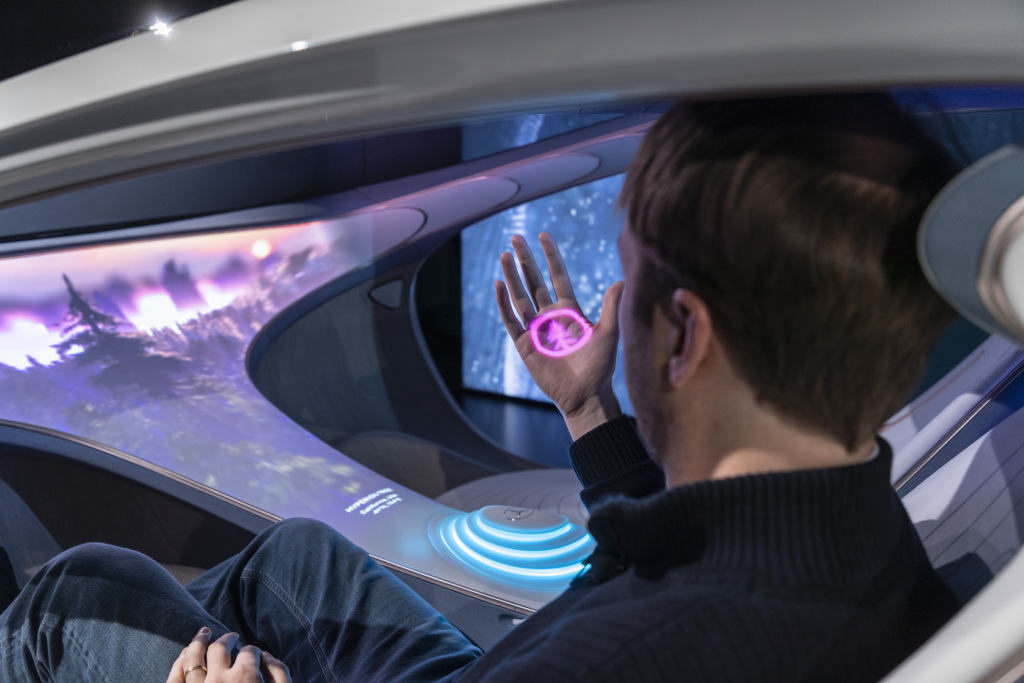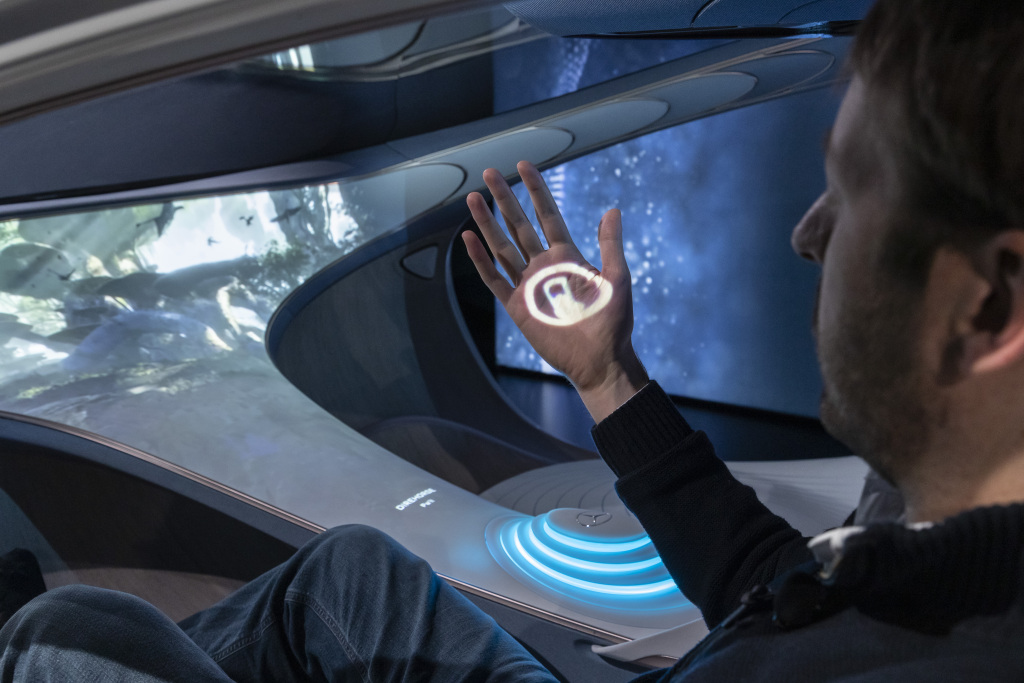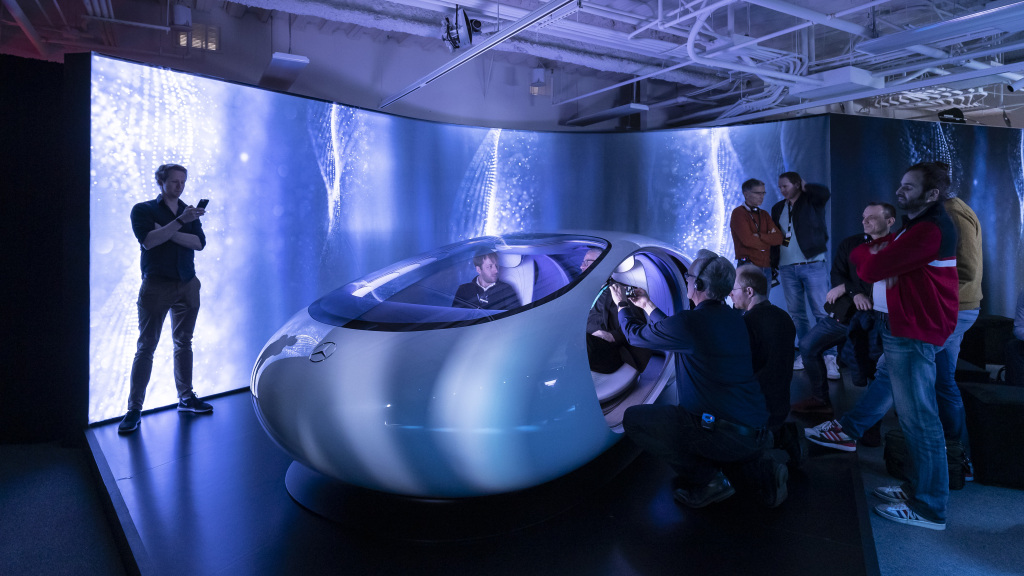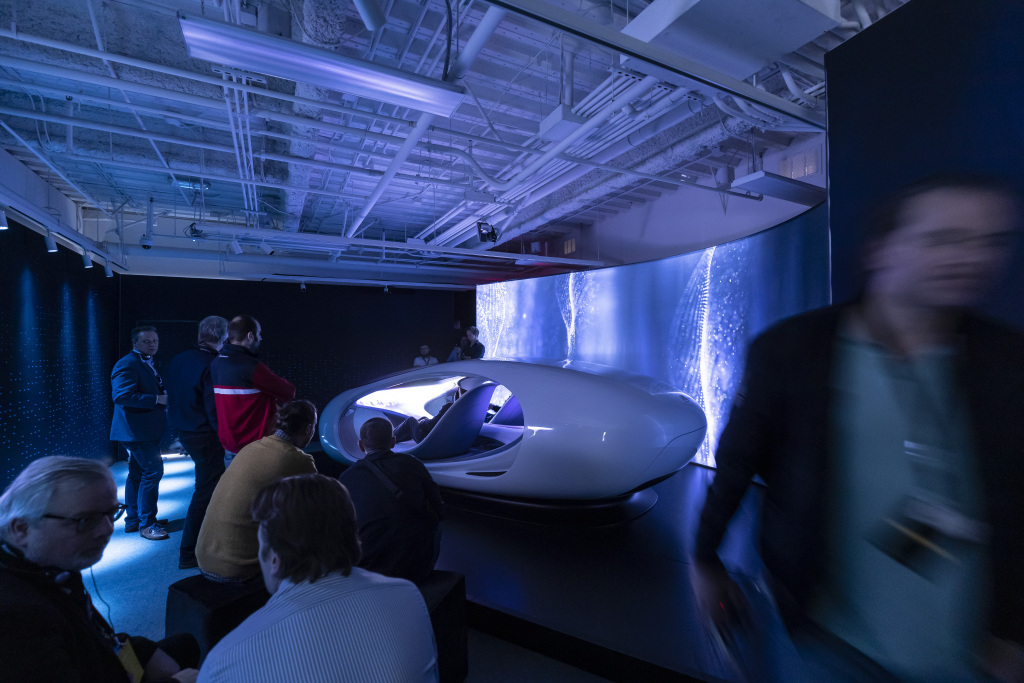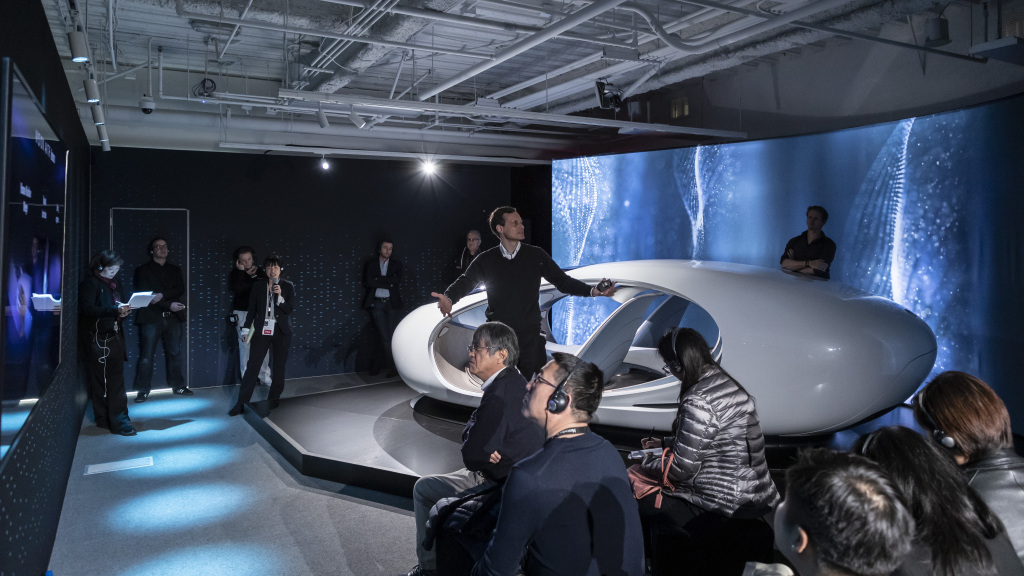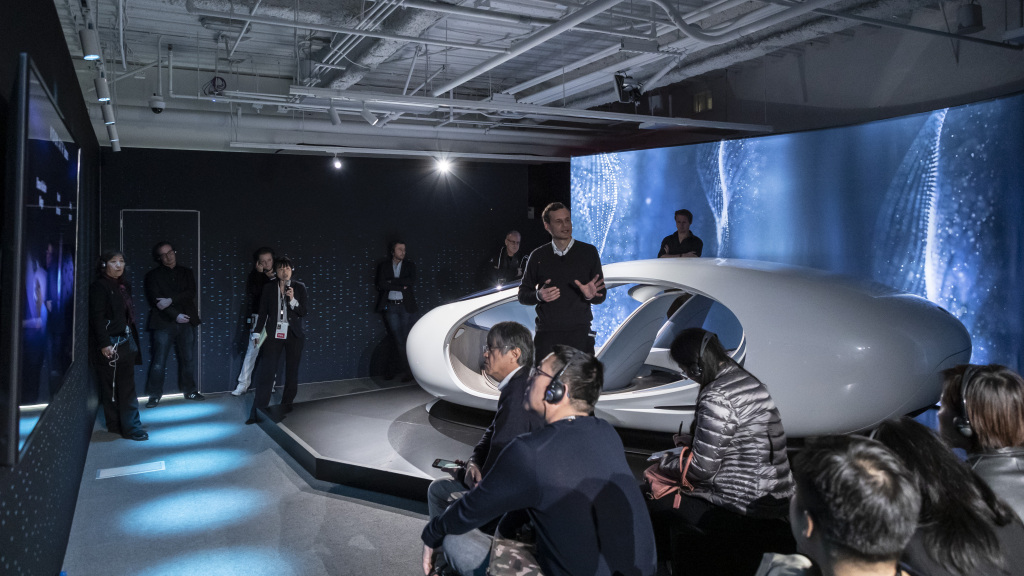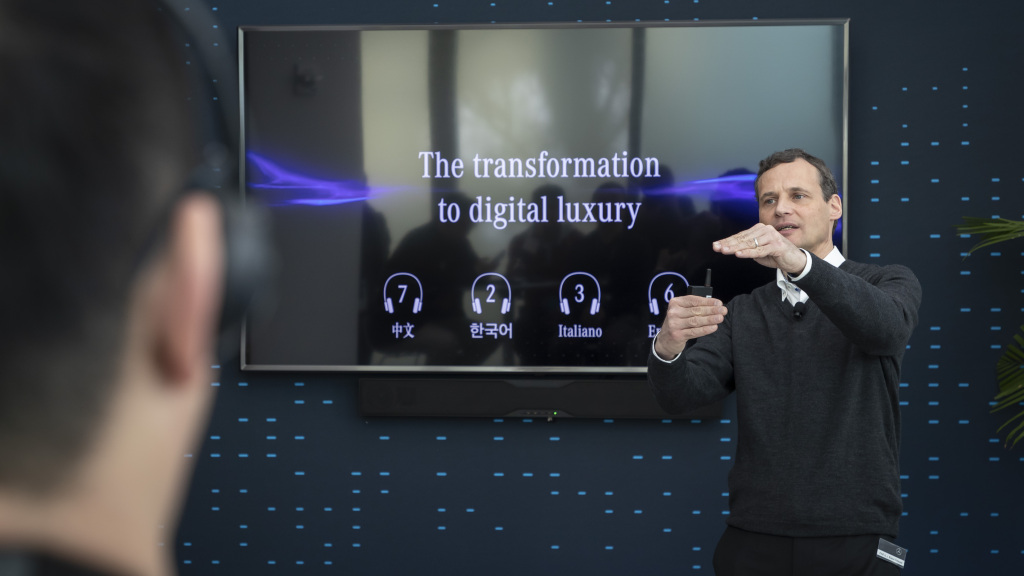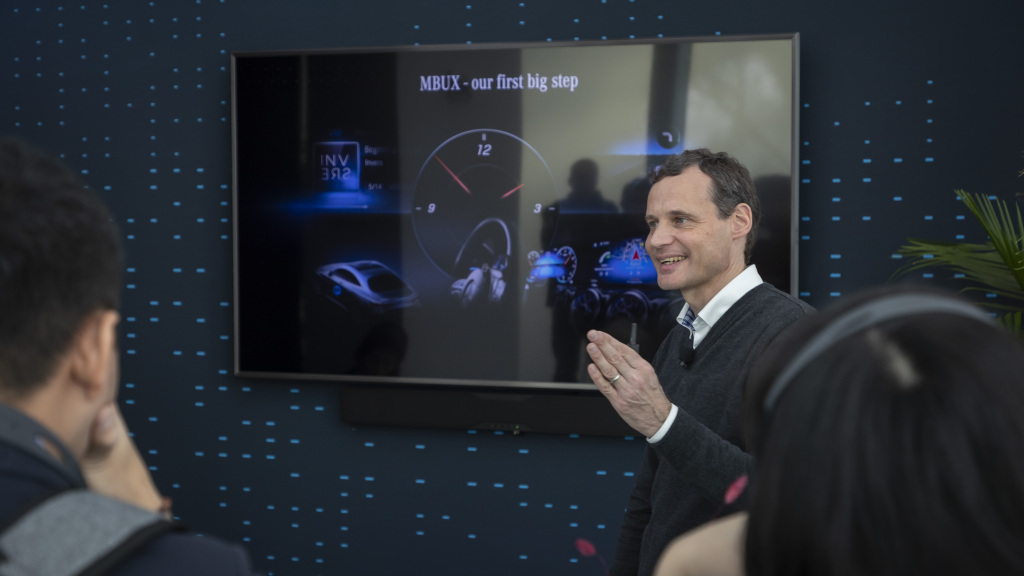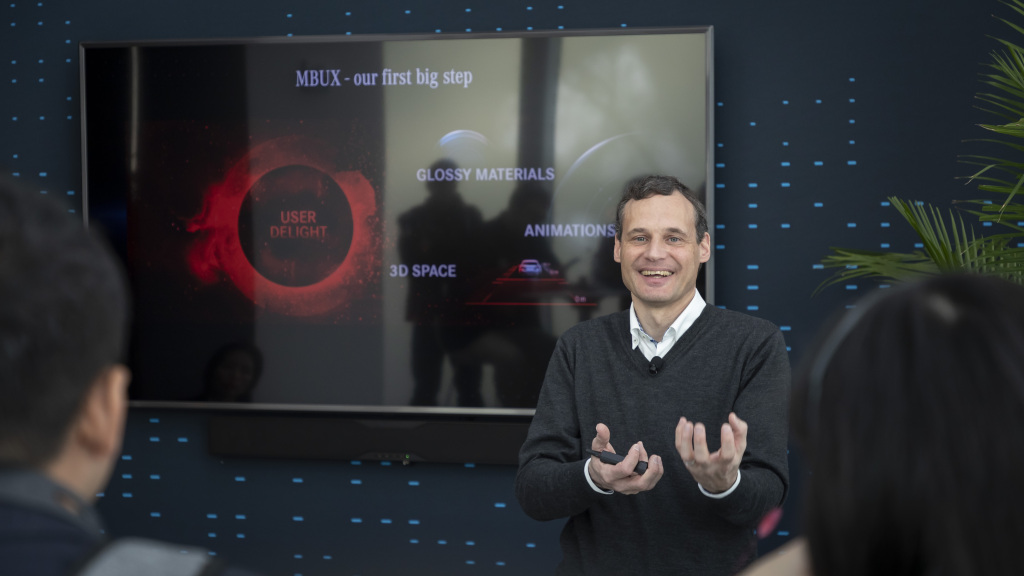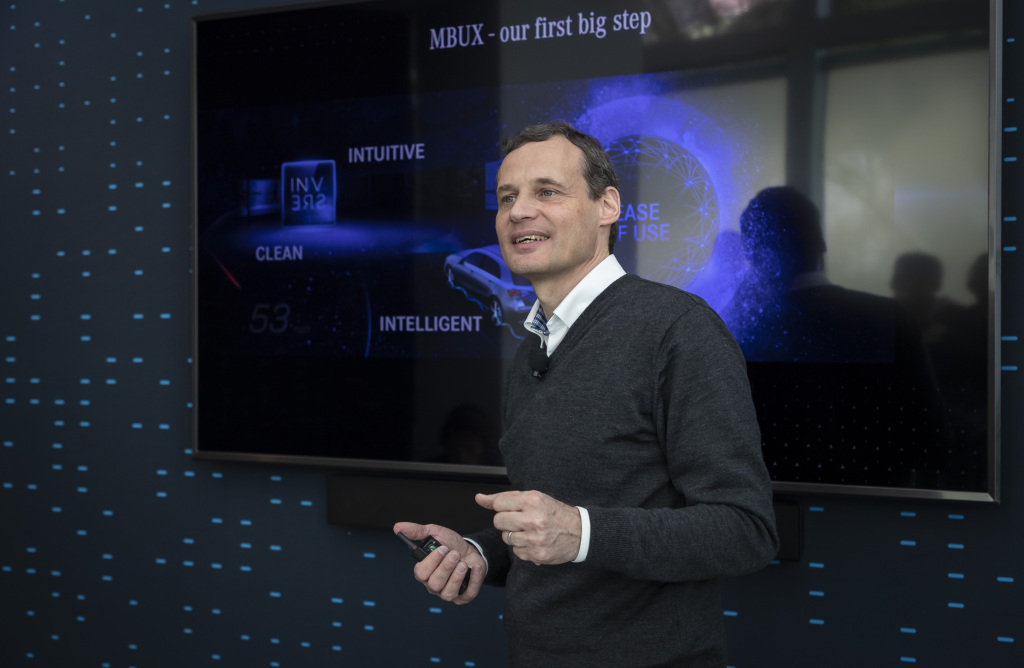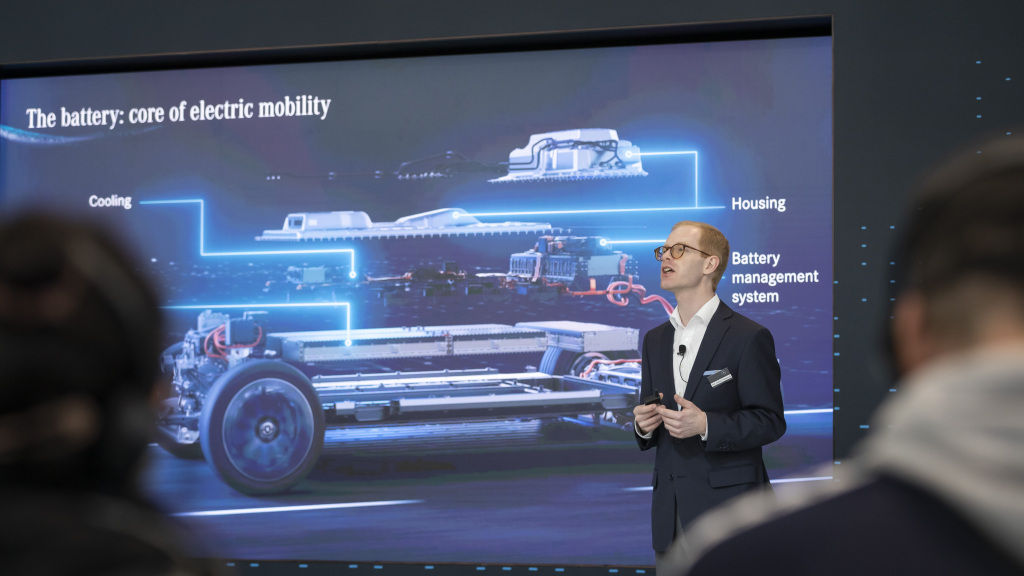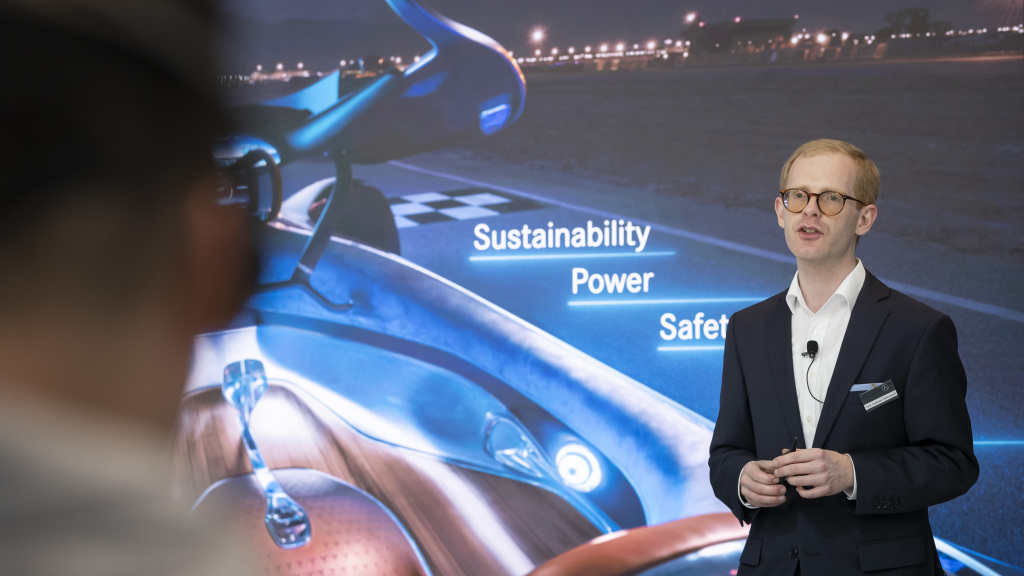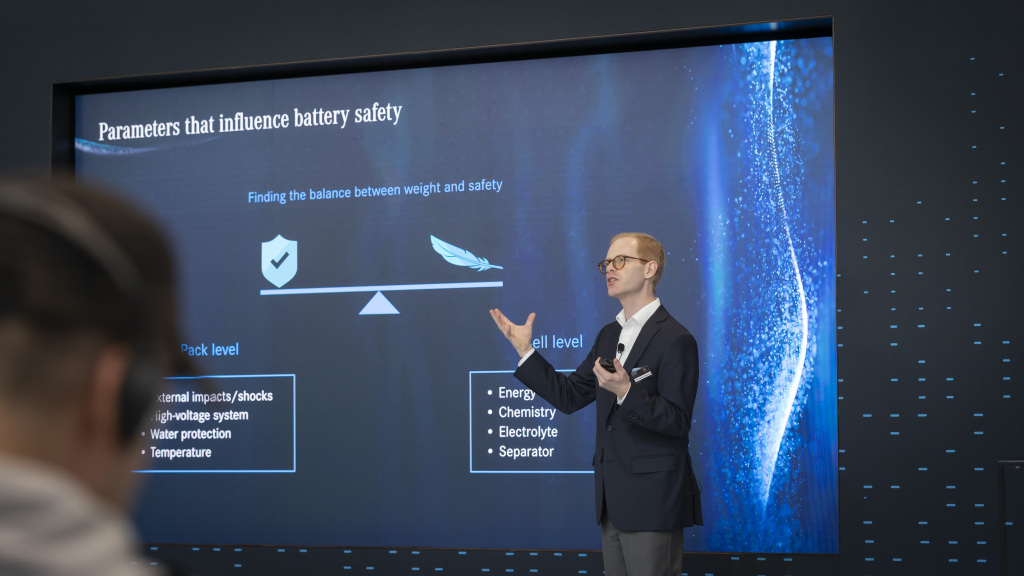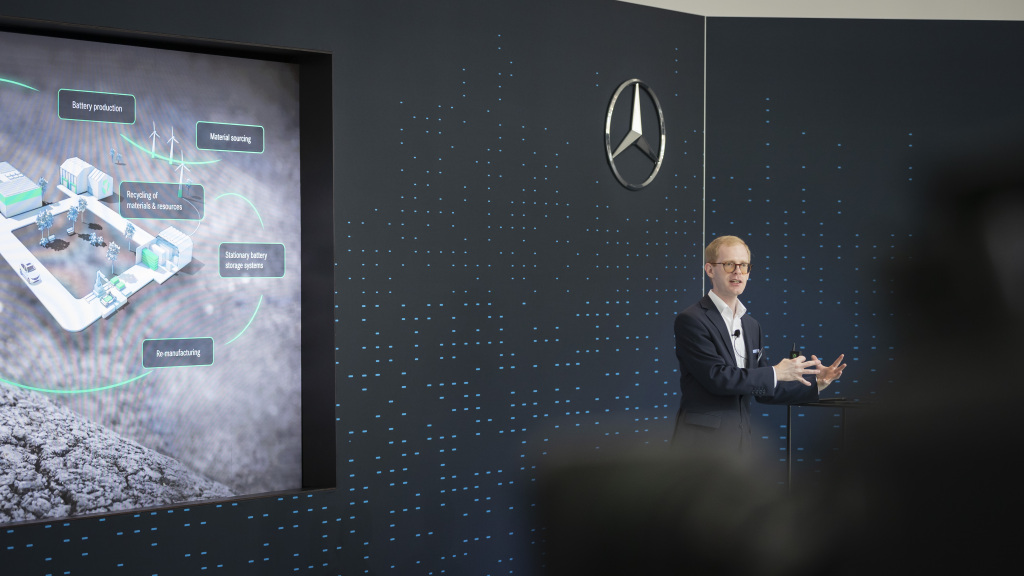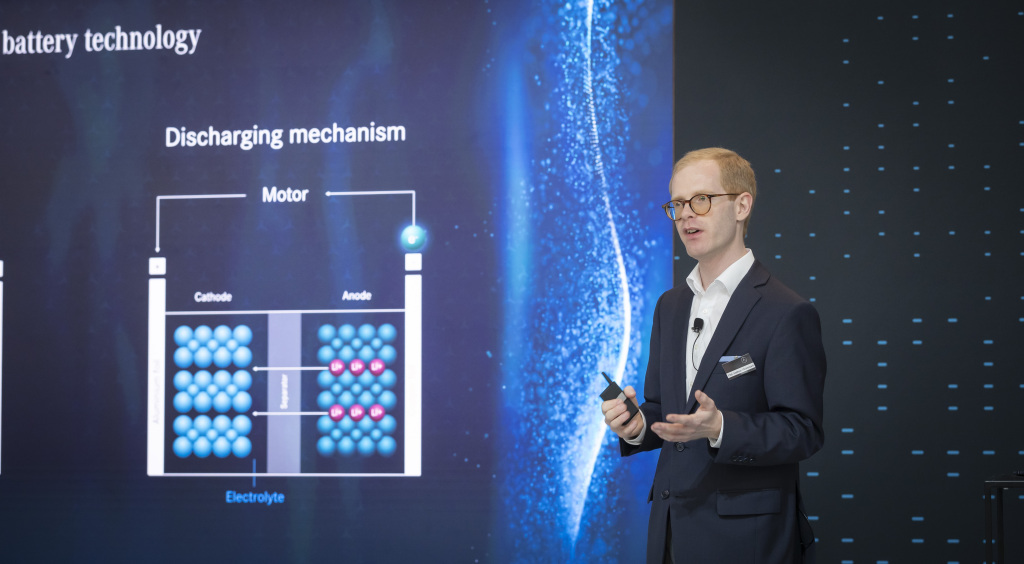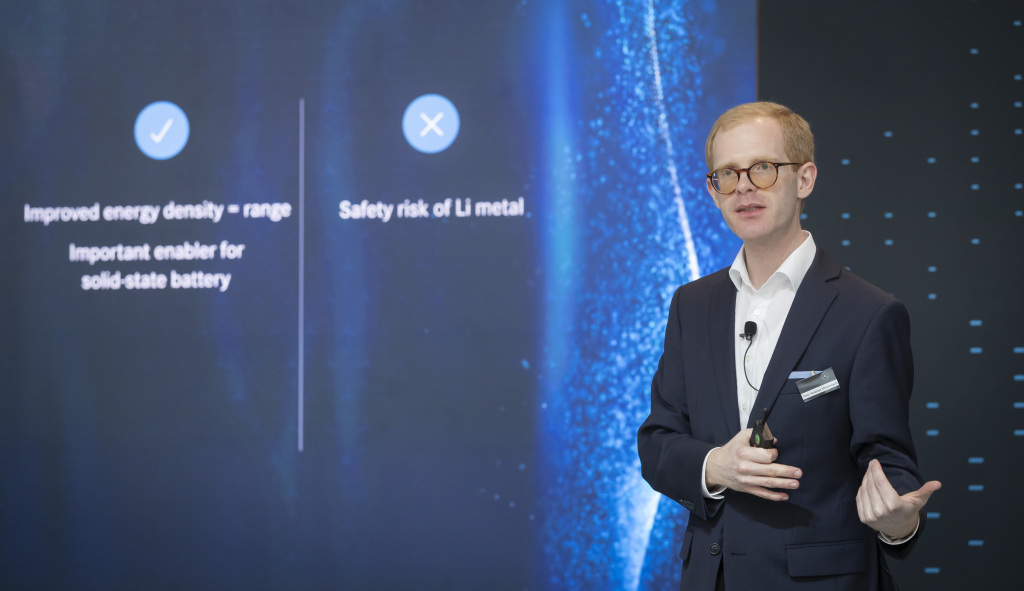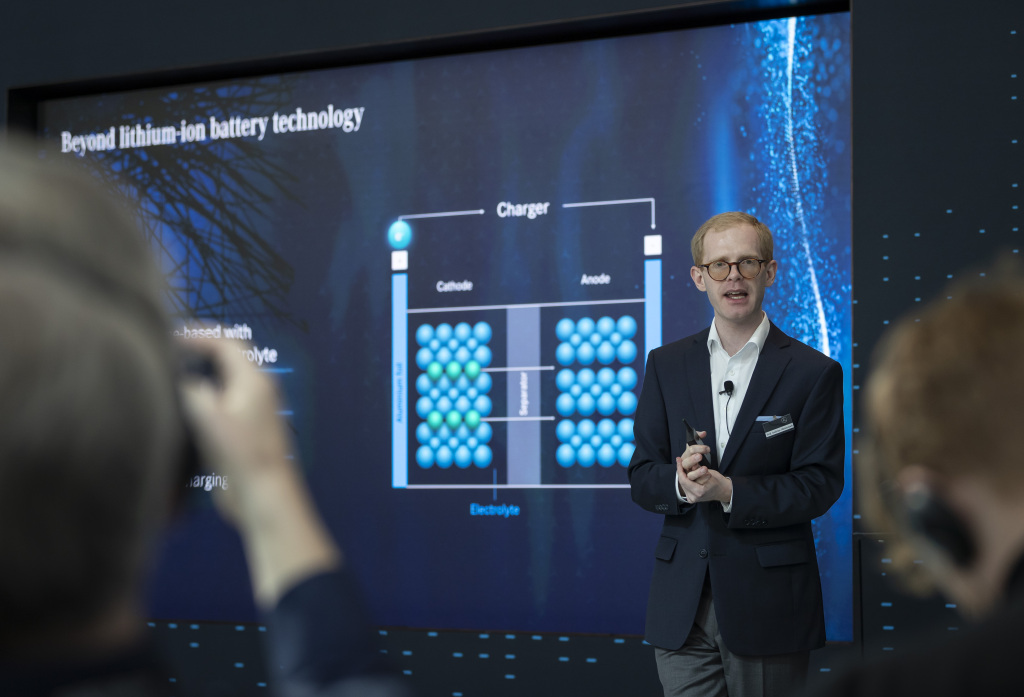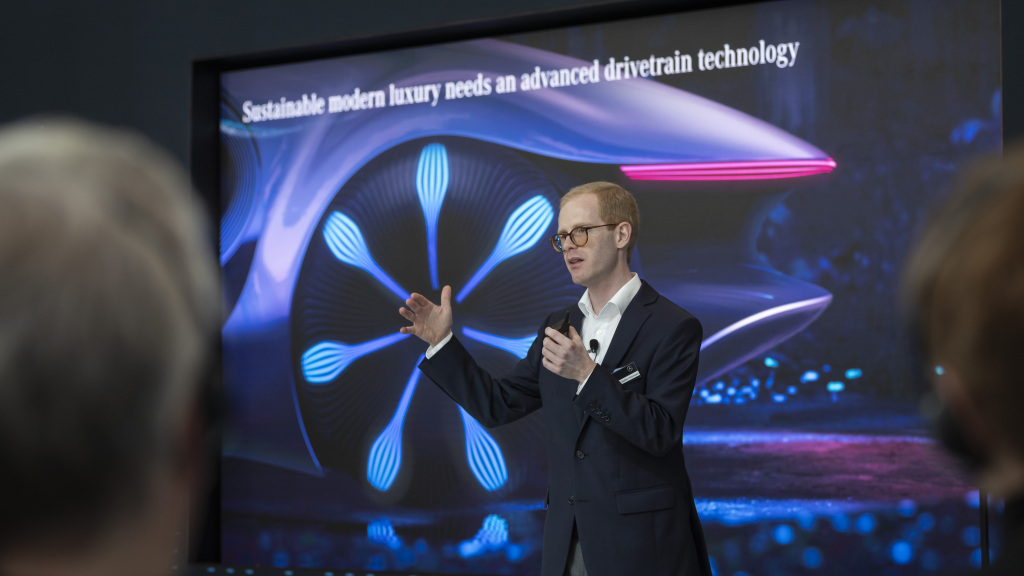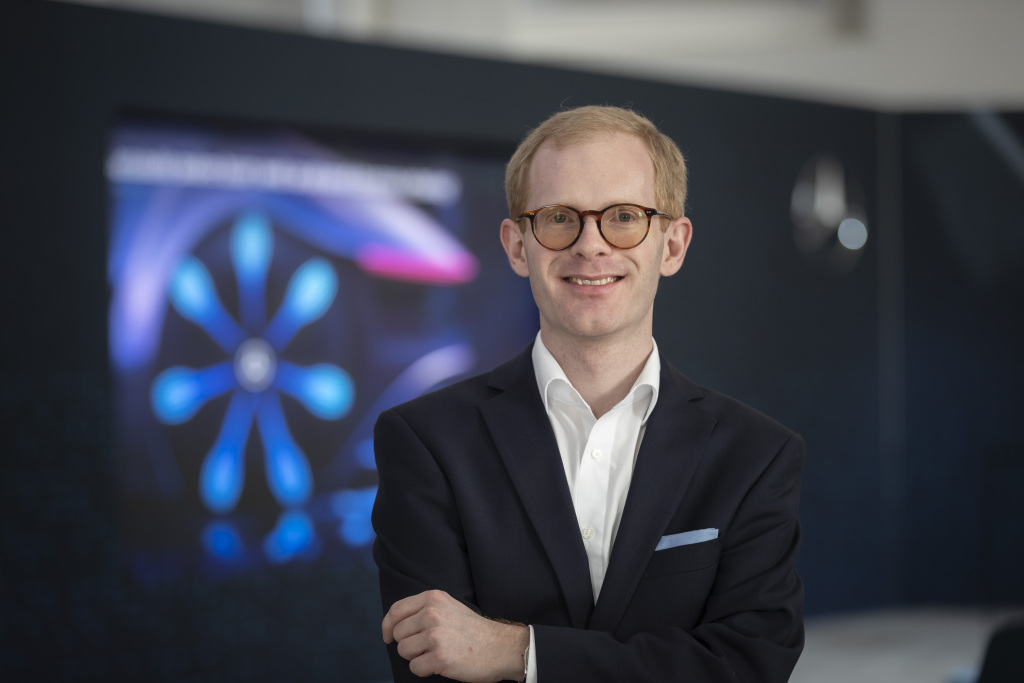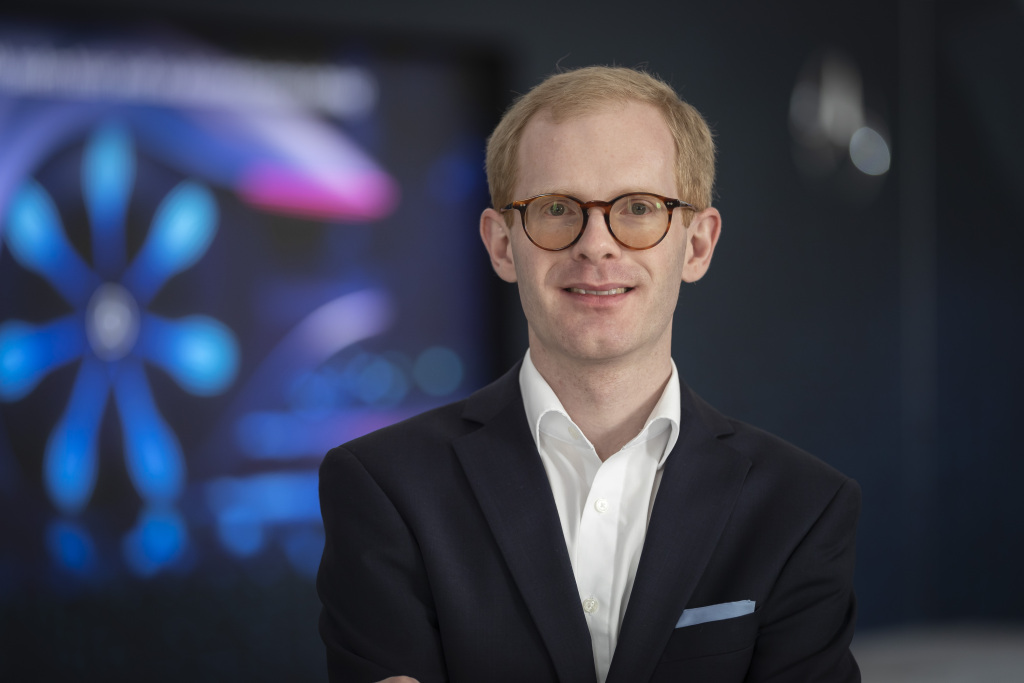“Where do we take it from here?” I guess that’s the core question of every CES. And this inner unrest for what’s next is also at the core of our purpose at Mercedes-Benz. Today we would like to show what that means. As a film buff, I spent some time catching up with old and new movies. One of the classics, “Back to the Future,” predicted we would be traveling in flying cars by now.
Yes, air taxis exist. One example is the shared “Volocopter” from a great team of entrepreneurs that we are supporting. But it’s still far from a standard option today. There’s another area of technology where the car has made great progress and still has amazing potential: connectivity.

With its stretched “One Bow” design and organic design language, the VISION AVTR offers a visionary outlook on the design of the future.
And to us at Mercedes, that’s way more than pairing a smartphone to your car entertainment system. What I want to focus on is the bond between human and machine. Tech in a car is all about the interface. From wooden sticks to switches and buttons, all the way to our MBUX voice assistant – like in our all-electric EQC. For example: you can ask Mercedes how your favorite sports team recently performed or what the weather looks like on the way to your favorite ski resort. Later this year, you will also be able to control your smart home from the road. And the next step in the evolution of the interface at Mercedes is just around the corner: the first truly intuitive gesture control. Because we believe the interface is key to providing customers seamless access to opportunity – without being lost in complexity. The more natural the connection gets, the better. That’s especially important for our business because folks build highly emotional relationships with their cars. I don’t know how many people have a nickname for their smartphone. But we all know that many cars are called and treated like friends or family. So it’s even more satisfying when you can interact with your car like a friend. One idea we want to show is based on a biometric connection between the car and the driver. The car recognizes the human driver’s heartbeat and breath so human and machine literally merge into a fully intuitive experience.
Selecting different functions, for instance, is easy: simply raise a hand and the menu is projected onto your palm. Before we get to that, there’s another, even more fundamental dimension of connectivity we cannot ignore: connecting tech and nature. Mercedes-Benz has always been a technology and a luxury brand. And it is time to bring luxury and sustainability even closer together. Because for us, the two are no contradiction.

The Mercedes-Benz designers used the “woodsprites”, the seeds of the tree of souls from “Avatar” as inspiration for the design of the wheels. The wheels of VISION AVTR embody the
I am a finance guy by training; I know that resources are always limited – including those of our planet. And I am Swedish by birth – it’s a beautiful, sparsely populated country with abundant nature and wildlife. In fact, more than half of Sweden is covered by trees. To preserve nature, many things need to change. And we are determined to take responsibility. Some people might say “here’s the easy fix: Stop people moving from A to B. Stop making cars altogether.”
But let’s face it: global demand for individual mobility is set to grow. Our 2019 sales figures prove that with the ninth record year in a row – and the fourth consecutive year as the number one car brand in our segment. Our home turf, the luxury car market, is projected to outgrow the industry average. People just love their individual freedom to instantly go where they choose when they want. That’s why our perspective is clear: we understand the boundaries of our planet. But we don’t want to add new boundaries to mobility. In other words, fewer cars are not the solution. Better cars are. Yes, the continued growth of mobility means a corresponding growth in the use of resources. But we have to change that. Our approach is decoupling. Decoupling the Mercedes way, however, means that we’re decoupling volume growth from resource consumption. Our tools to achieve that are sustainable innovation and technology.
And we have three main levers to succeed: reduce, reuse, recycle – with the ultimate goal of fully closing the loop, from value chain to value cycle. Nature is and remains our greatest teacher. Nature has perfect cycles: nothing’s wasted. This attitude also sets the bar for the way we want to do our business. Bringing humans, machines and nature closer together will require action on many different playing fields.
Carbon-neutral new passenger car fleet by 2039
For us, step one is reducing our CO2 footprint: we’ve started that under the headline of “Ambition 2039”. We’re aiming at carbon-neutral vehicle production, growing the share of electric vehicles sold and, finally, having a carbon-neutral new passenger car fleet by 2039. We want to address this in a holistic way. That includes driving our suppliers and partners to comply with our objective of carbon neutrality.
Our next step: we’re focusing on resource preservation. For example: saving water. By 2030, our car-production plants are set to reduce their total water consumption by a third per vehicle. That adds up to hundreds of millions of liters of drinking water. The ultimate goal, of course, is a fully closed water cycle. That means our plants reuse a lot of the process water throughout the factory. We have initial projects underway in several plants around the world.

The vehicle as a living creature: The 33 “bionic flaps” on the back of the vehicle are reminiscent of scales of reptiles. They can communicate with the driver and through the driver with their outside world through naturally flowing movements in subtle gestures.
Another example is reduced energy consumption. By 2030, our car production plants are set to reduce the energy they consume by more than 40% per vehicle. Today, our plants in Jawor, Poland, as well as in Hambach, France, already run entirely on renewable energy. By the end of 2022, all plants in Europe will be carbon-neutral run on renewable energy. The rest of the world will follow. And we’re also reducing waste. By 2030, our factories will also reduce waste per vehicle by more than 40%.
Every Mercedes passenger car is recyclable by 95% today
Where we can’t go for reduction, we focus on reuse and recycling. As we keep expanding our electric vehicle lineup, the battery is a major lever. A great example of reusing electric car batteries is giving them a second life as stationary energy sources. Ultimately it’s about closing the loop in a circular economy based on recycling. Every Mercedes passenger car is recyclable by 95% today. And this standard also applies to our electric cars. Battery recycling is happening, but there is room for improvement. What we are aiming at are 100% recyclable batteries.
So we will show you a sneak preview of a next level battery technology for the future. At the same time, we keep encouraging our partners and suppliers along the value chain to further increase the usage of secondary materials like steel, aluminum and polymers to foster circularity. Just as we do in reducing our CO2 footprint. To sum it up: the philosophy of reduce, reuse and recycle will lead us to our ultimate goal: the zero-impact car – a car that uses technology to provide maximum fascination for people but has zero negative impact on the planet. This may be in the distant future. But it’s our goal nonetheless. Pursuing this mission we have teamed up with like-minded innovators who share our vision of putting tech and nature in balance.
They have created one of the most fascinating and successful Hollywood movies of all time. It is my great pleasure to announce the global partnership between Mercedes-Benz and the AVATAR films. I would like to present the first result of this partnership: the Mercedes-Benz VISION AVTR – which translates to “Advanced Vehicle Transformation”.
A visionary car that points far into the future. And a show car that is truly inspired by the fascinating world of AVATAR. The result highlights completely new ways of intuitively connecting humans and machines – without wooden sticks, plastic knobs or a steering wheel. The VISION AVTR also showcases new ways of moving people through the environment – sideways, like a crab, for instance. It takes sustainability to new levels through a fully recyclable battery, which is based on an organic cell chemistry and doesn’t need materials like nickel or cobalt.
This means in the future, the battery could be compostable. And it offers incredibly fast charging, too. Of course, this show car also uses many recycled and sustainable materials inside the cabin, like vegan DINAMICA leather or Karuun woods made of fast-growing rattan. It also provides spectacular insights into nature and nearby wildlife, while blurring boundaries between the interior and the outside world. In fact, it is less of a machine – and more of a living creature in its own right.
The VISION AVTR is a show car and show cars are here to spark our imagination of what’s possible, just like good science fiction movies do. Imagine a car that delivers a completely new experience which combines an inside-out design philosophy – with an outside-in approach to connecting passengers and environment. This car showcases new ideas of communicating – for instance by using its bionic flaps.
We believe aiming high and thinking ahead is incredibly important. We believe that inspiration and fascination are the most powerful drivers for change and progress. Our way is Sustainable Modern Luxury. Our tools are technology and innovation. The transformation of the automotive industry, the industry at large, and society as a whole – is something we look forward to. We’re quintessential tech optimists. The “Vision Advanced Vehicle Transformation” is a symbol of that. And a reminder that the best is yet to come.
